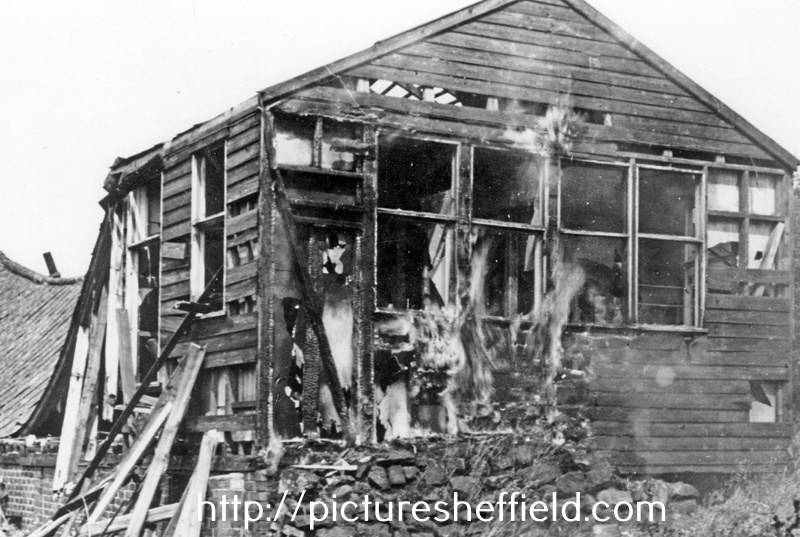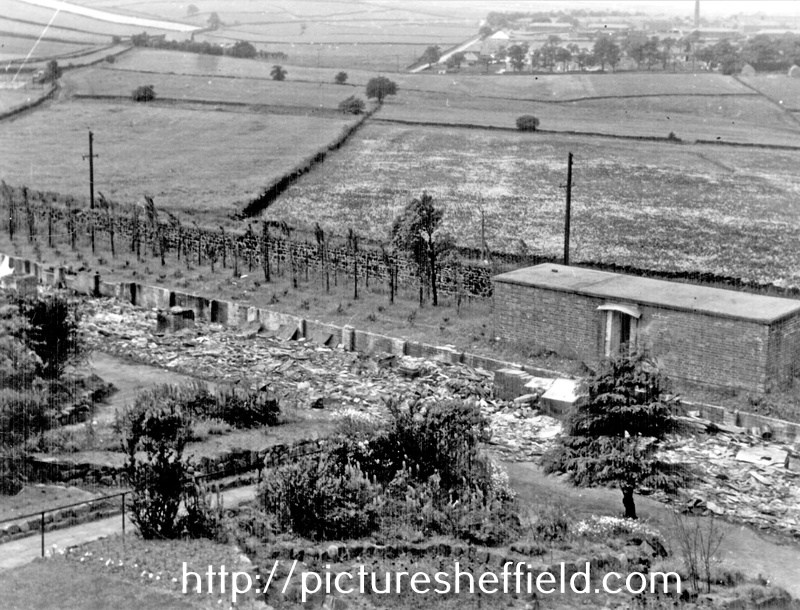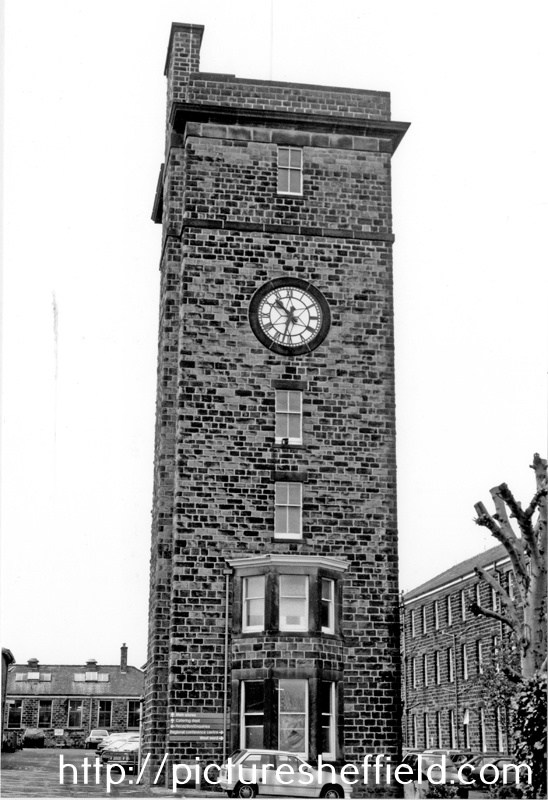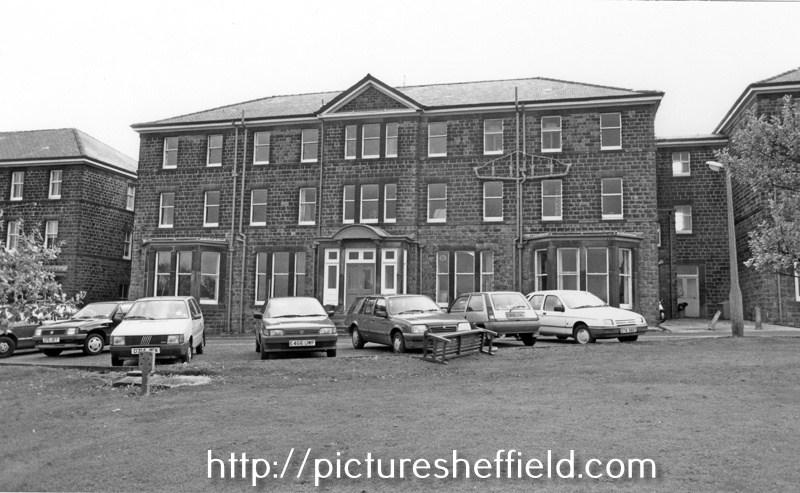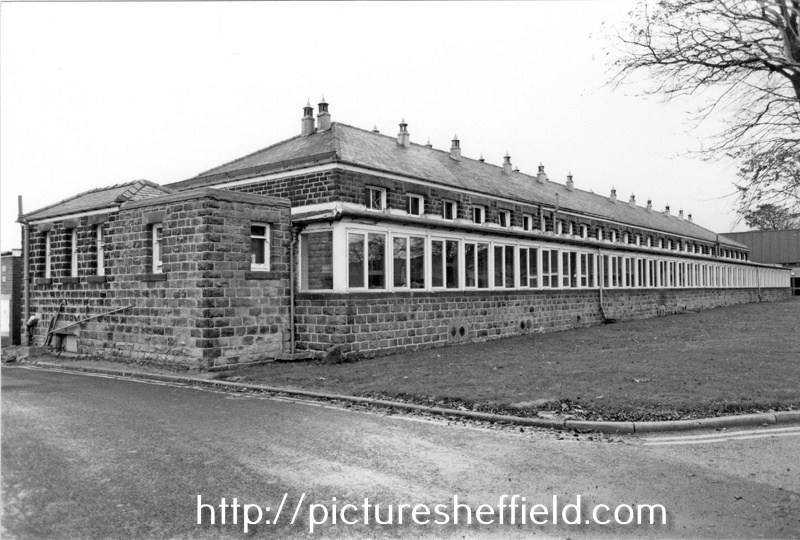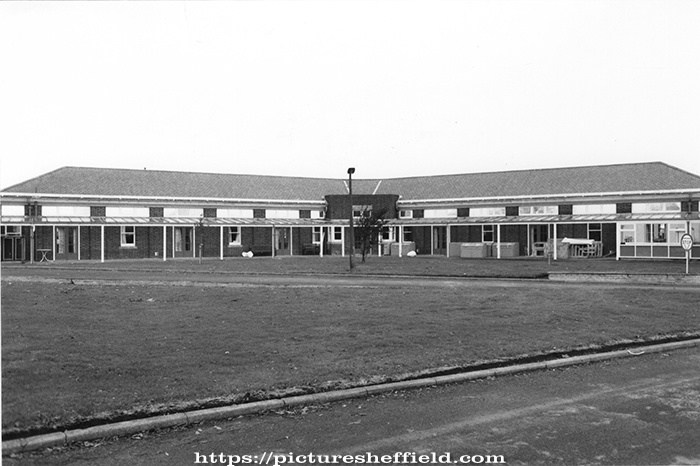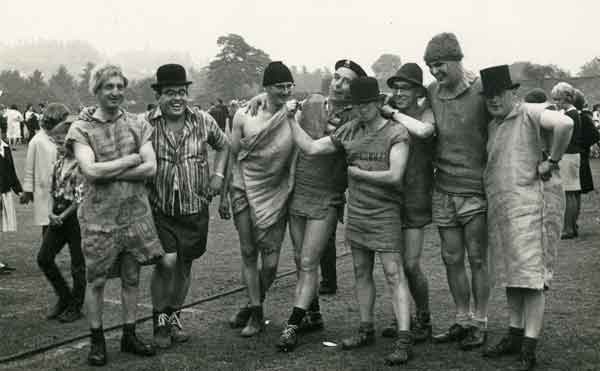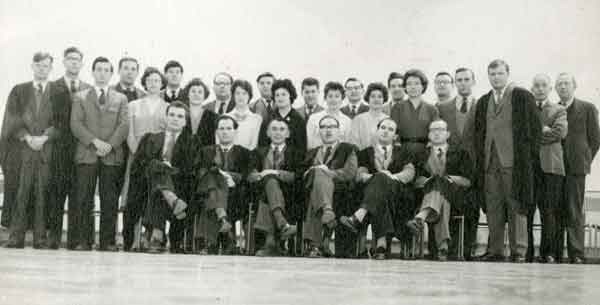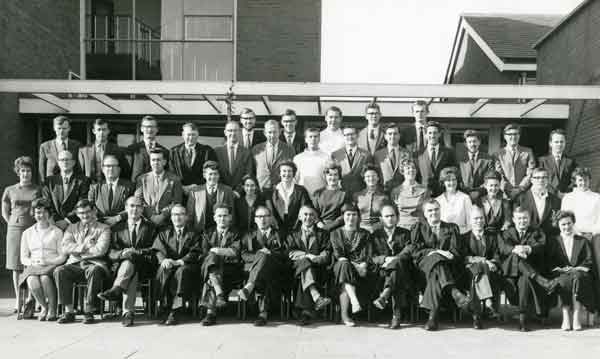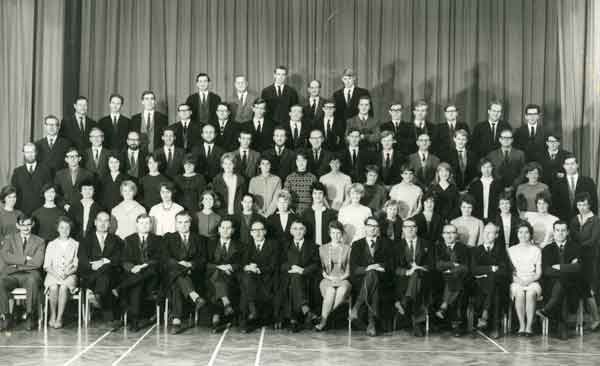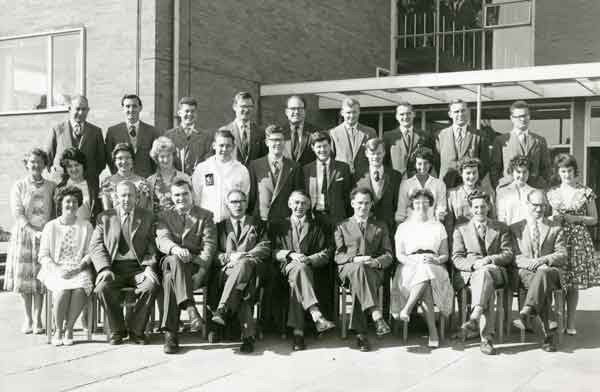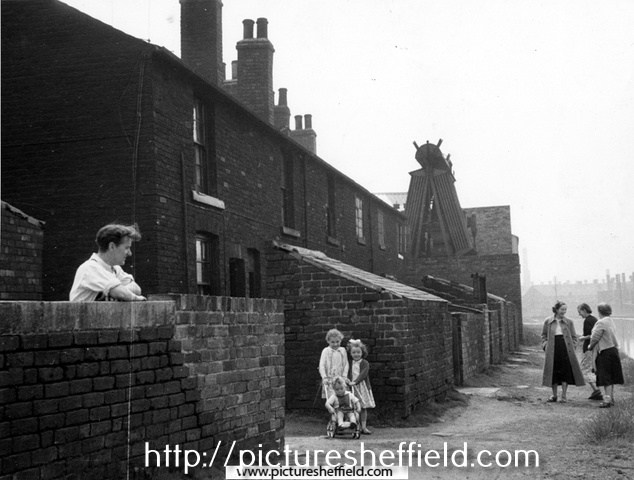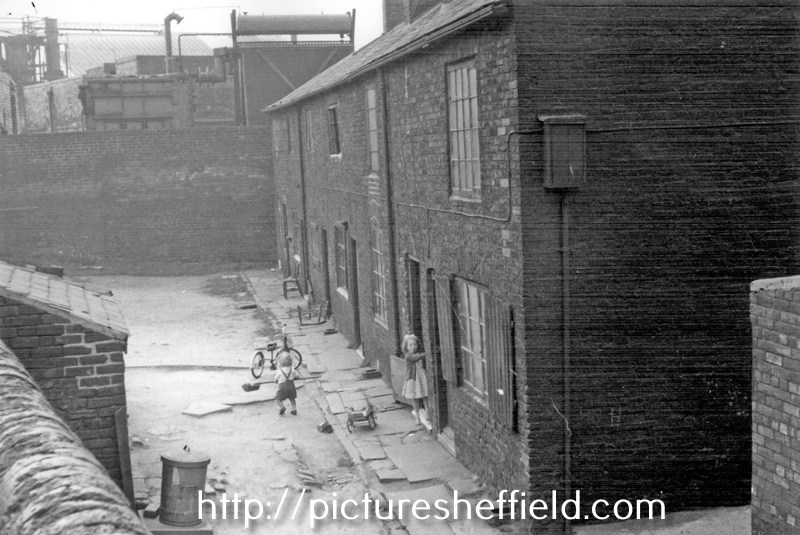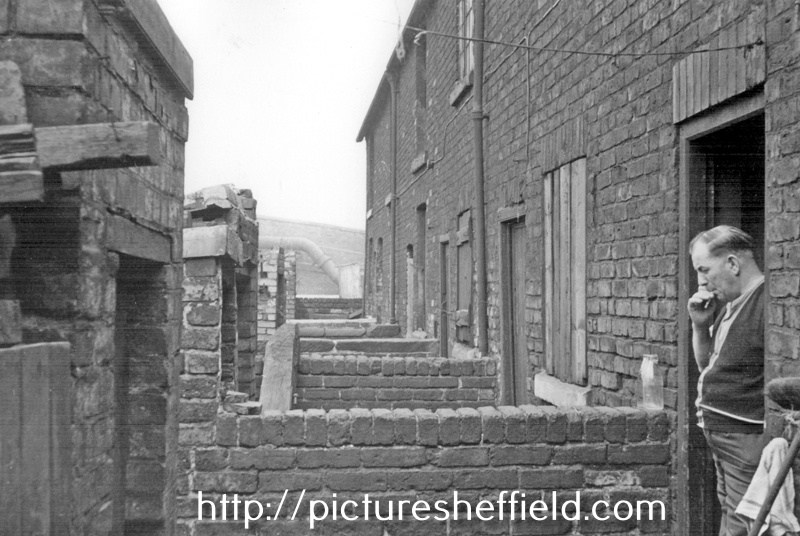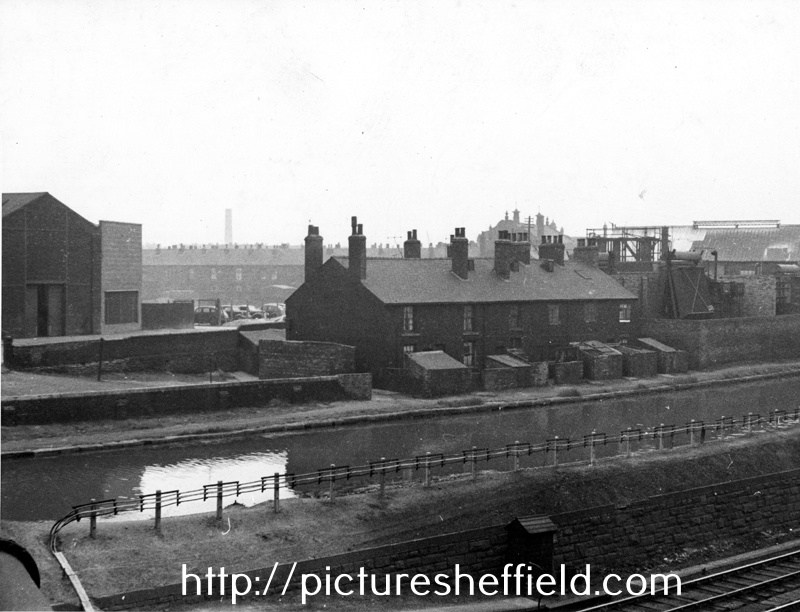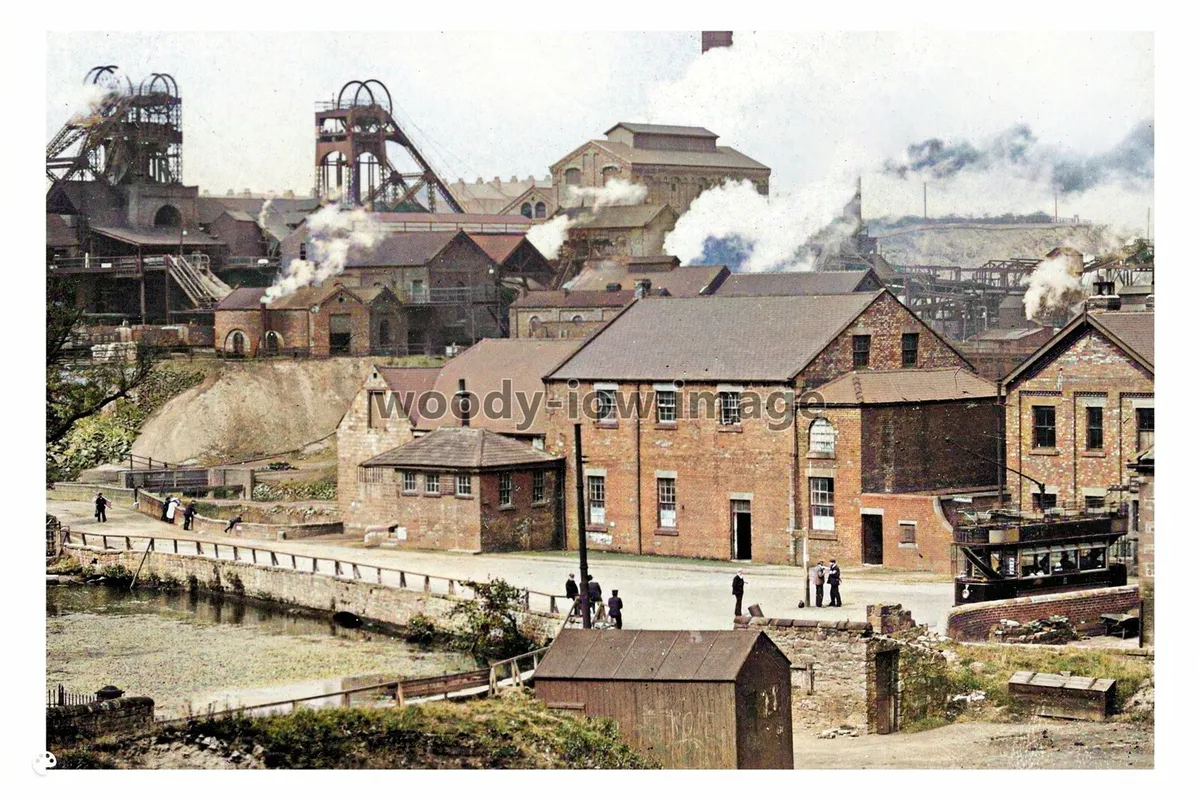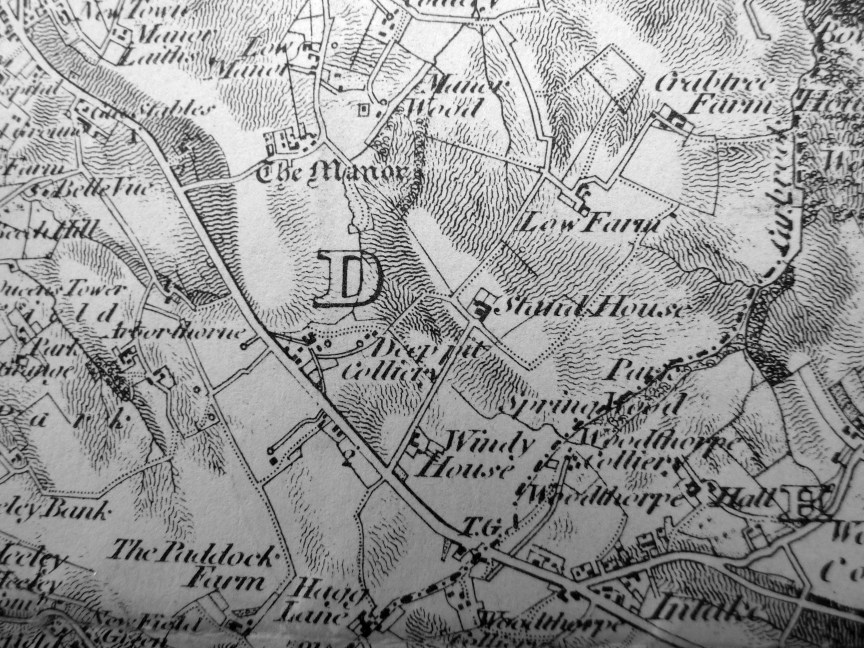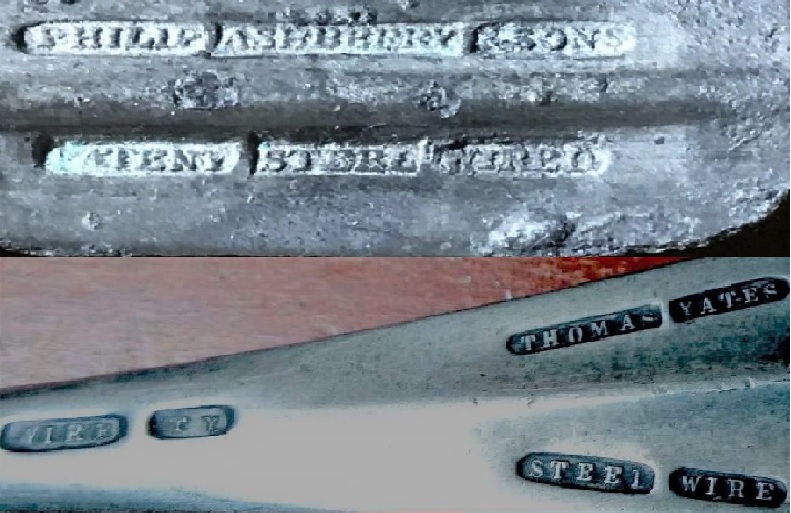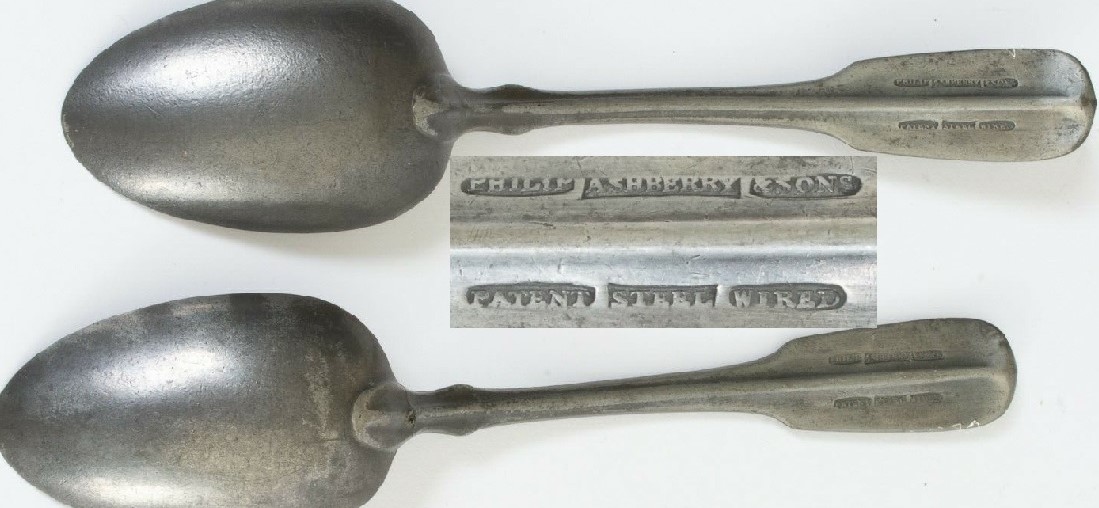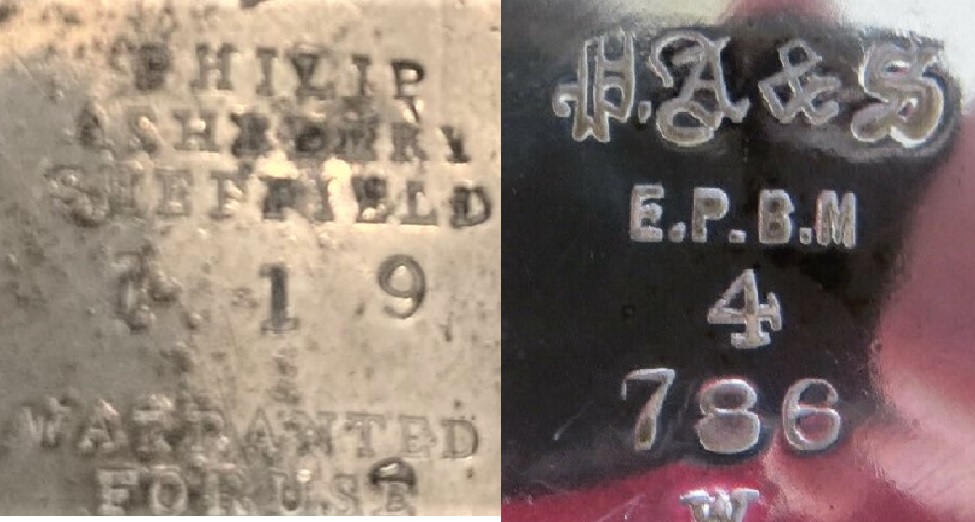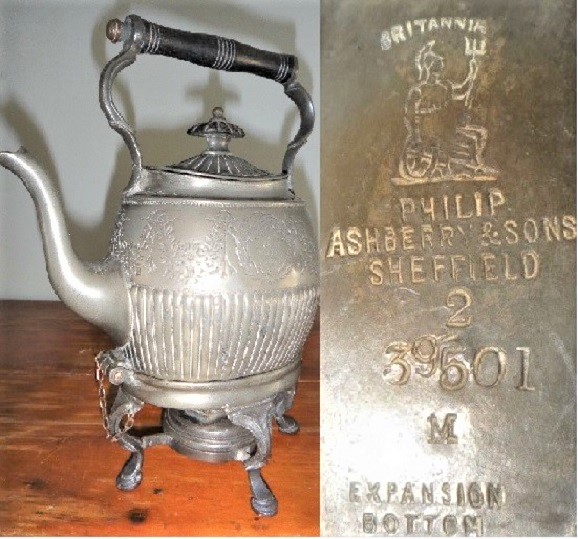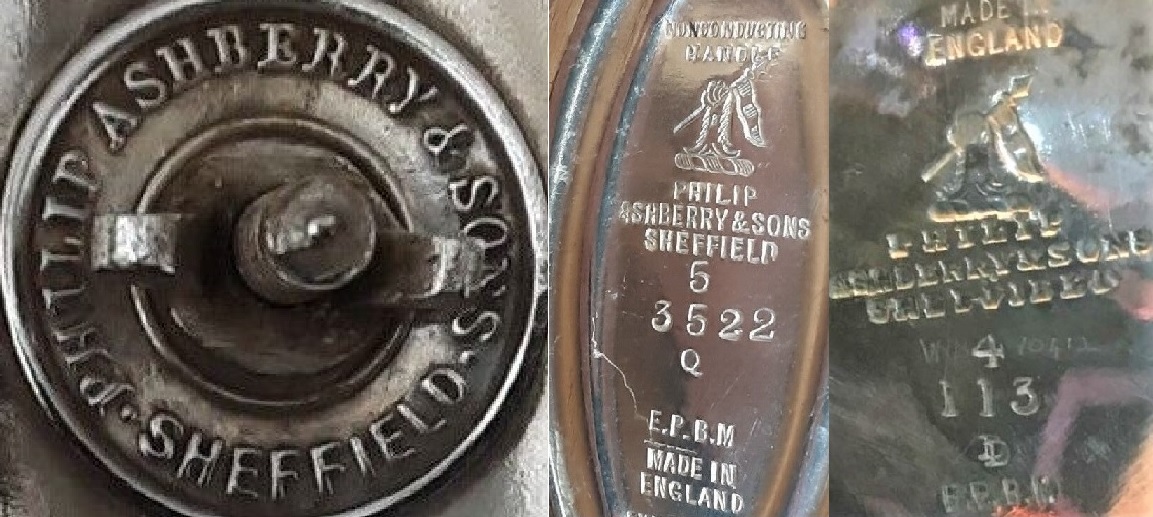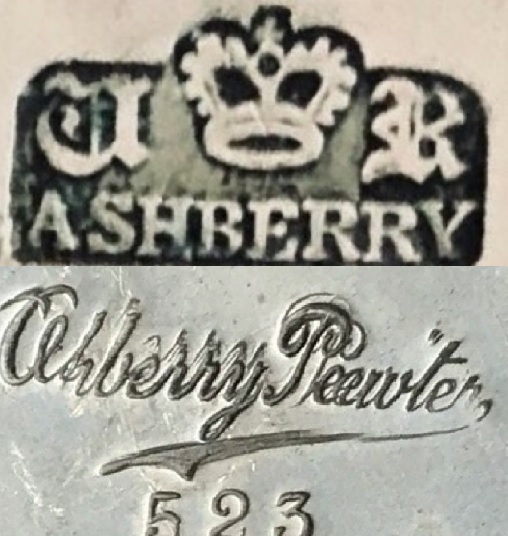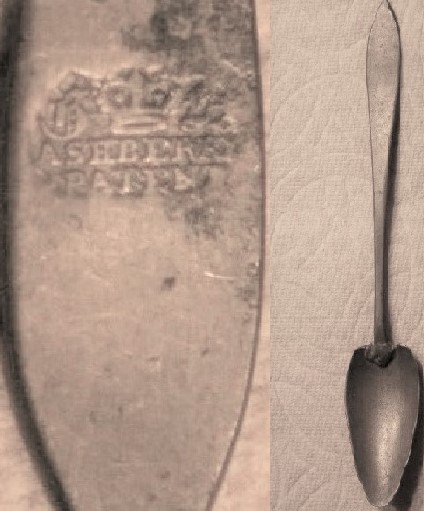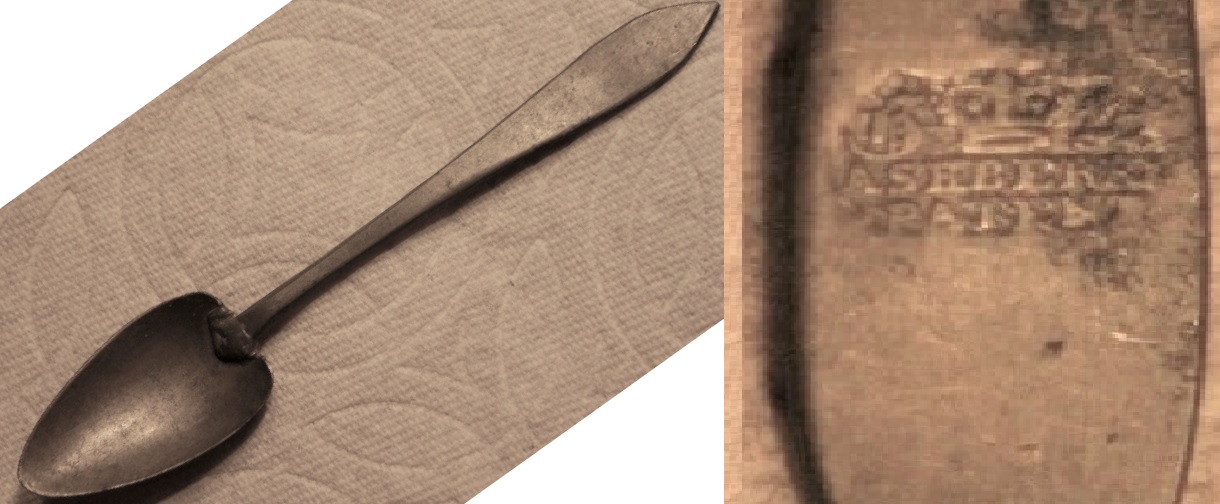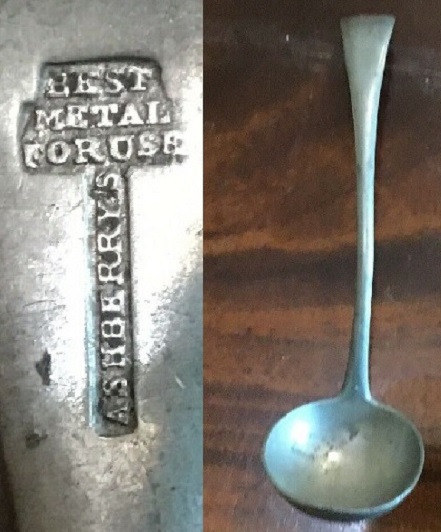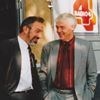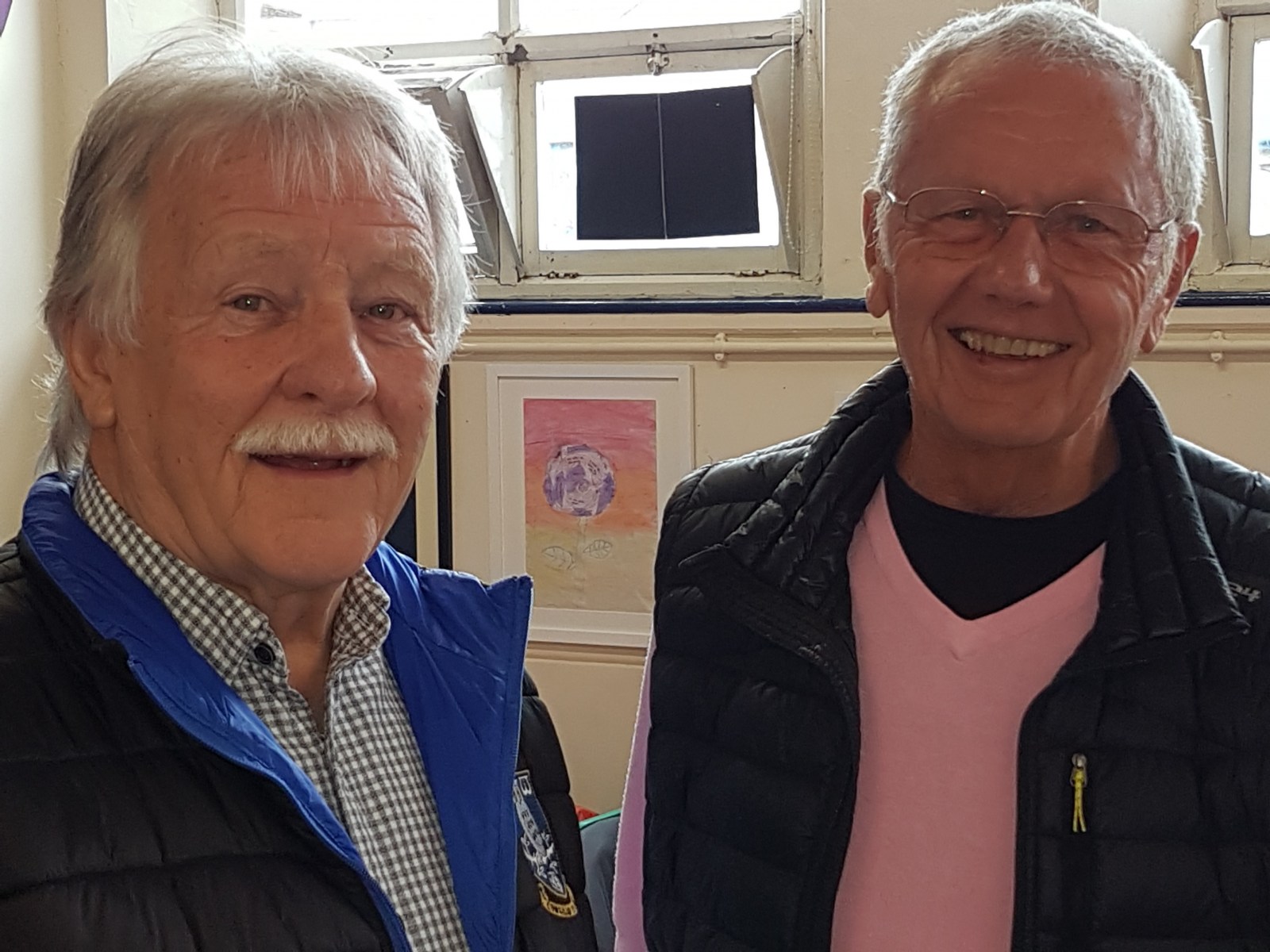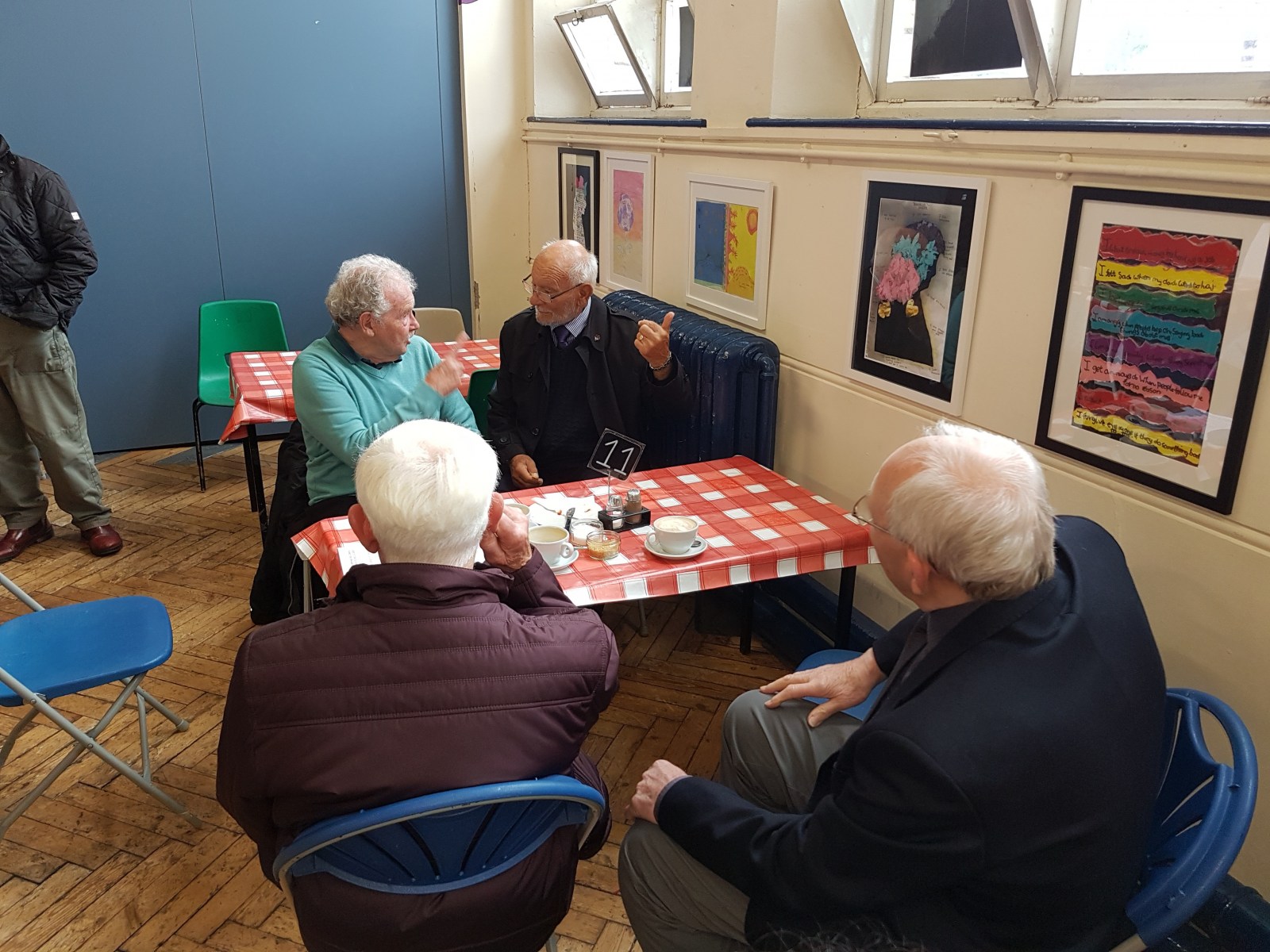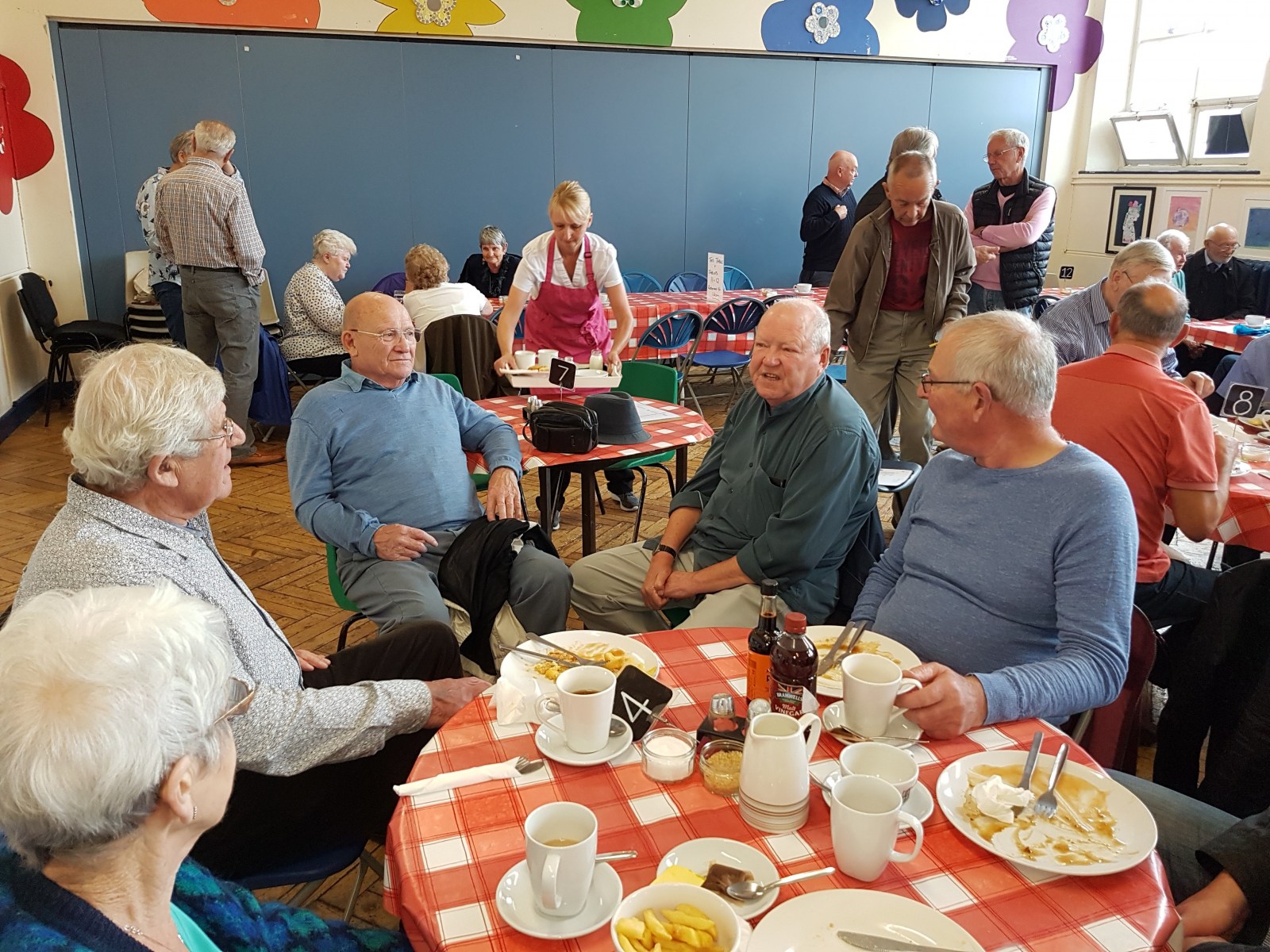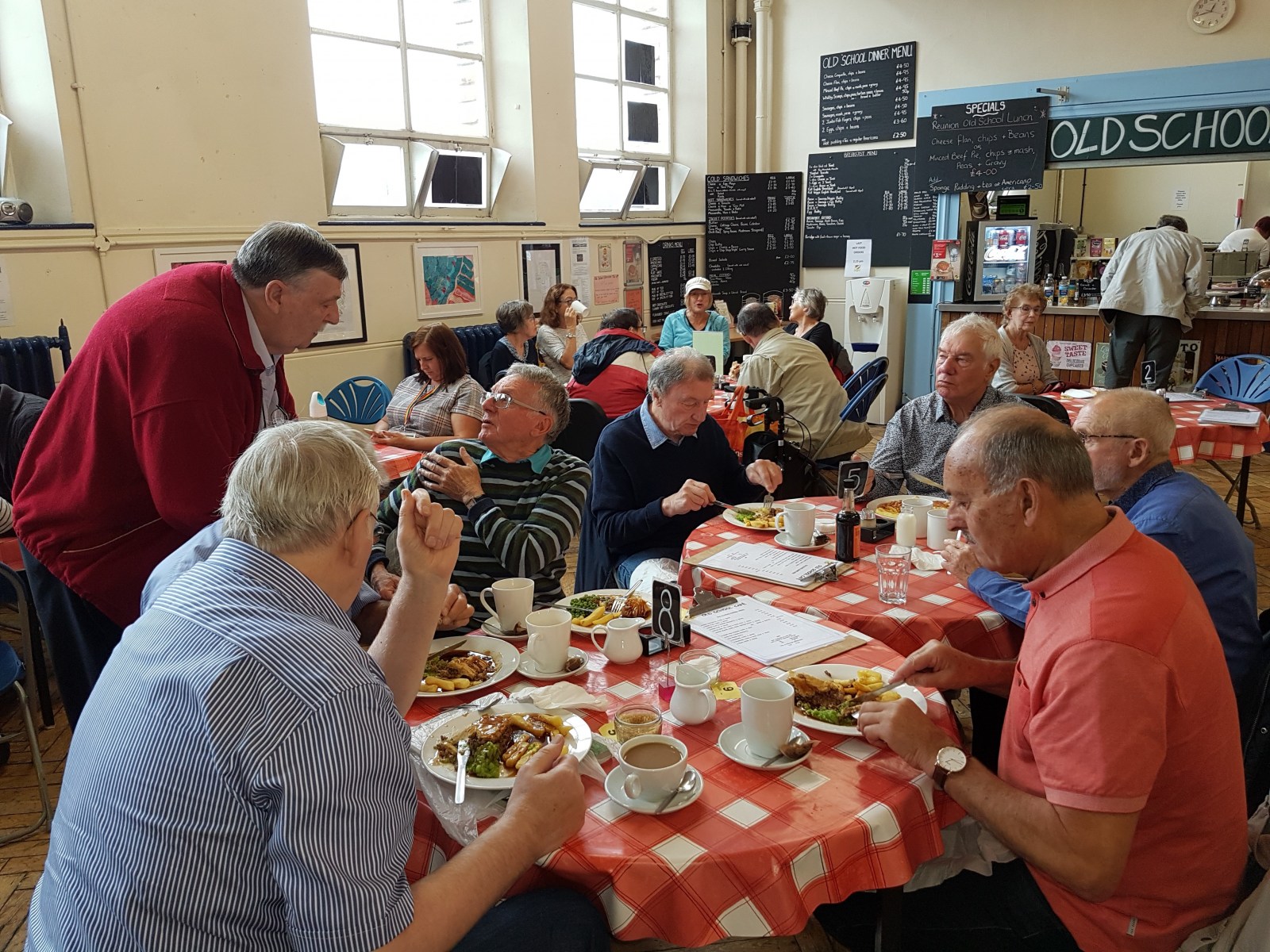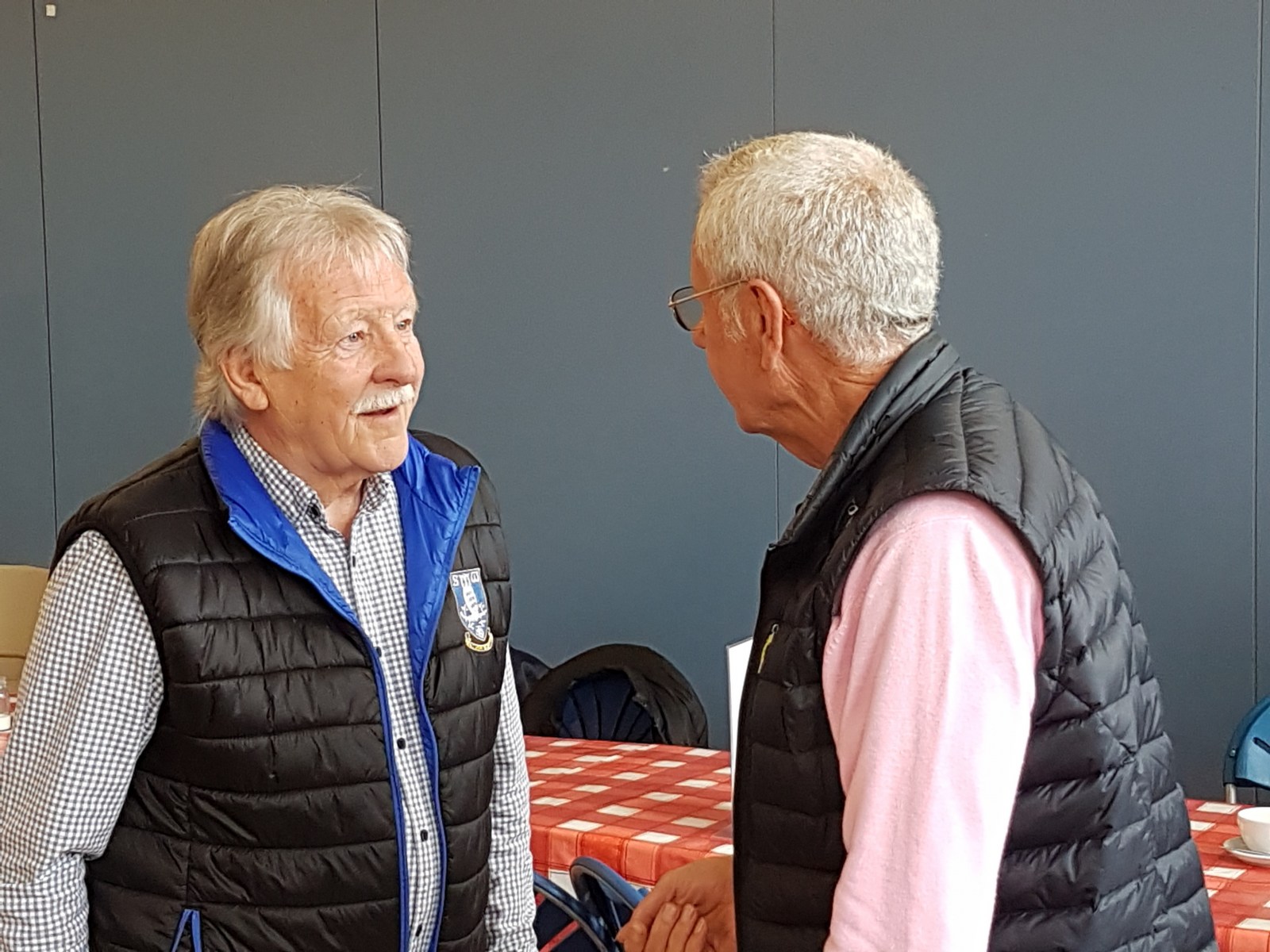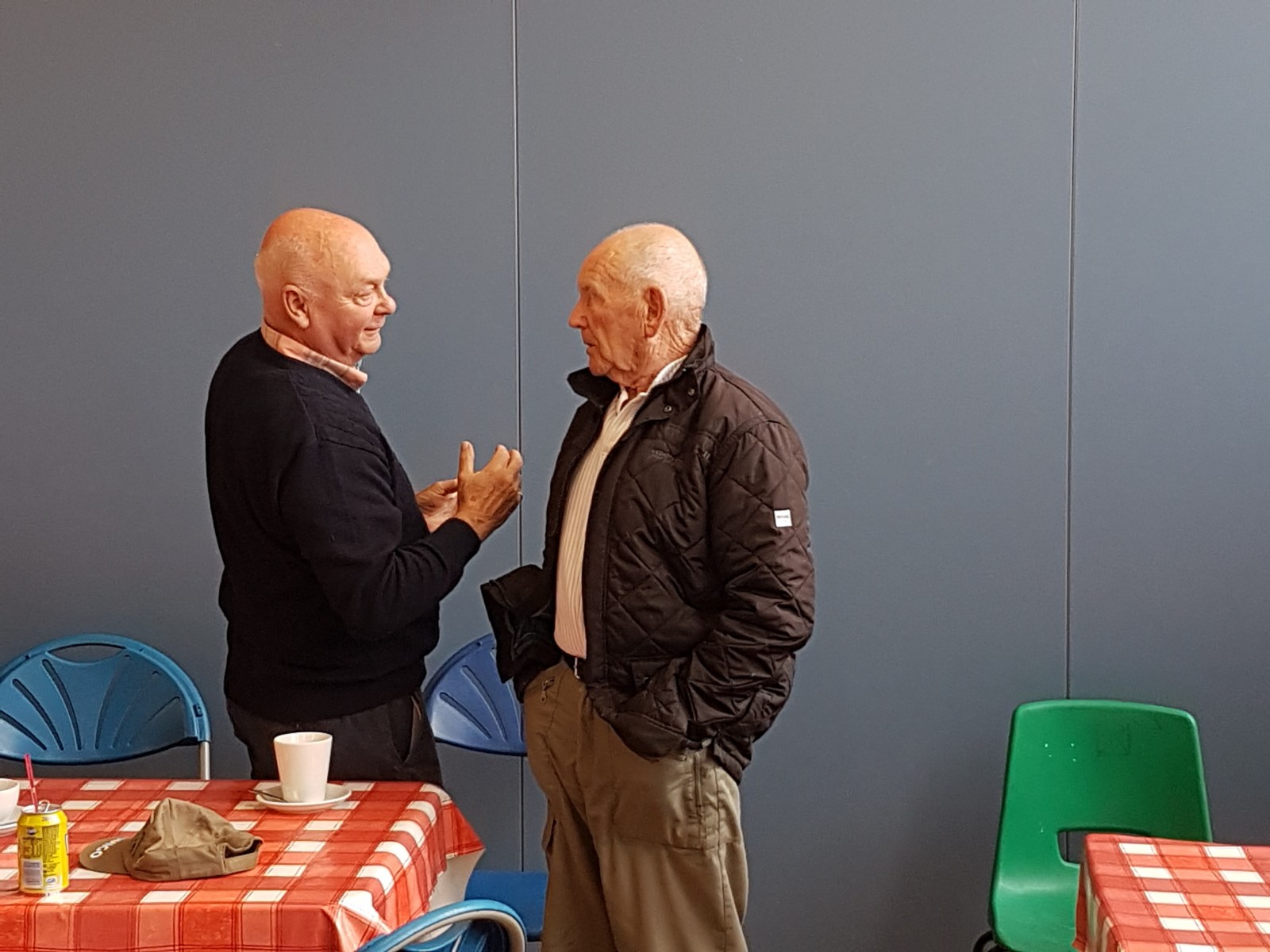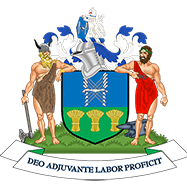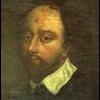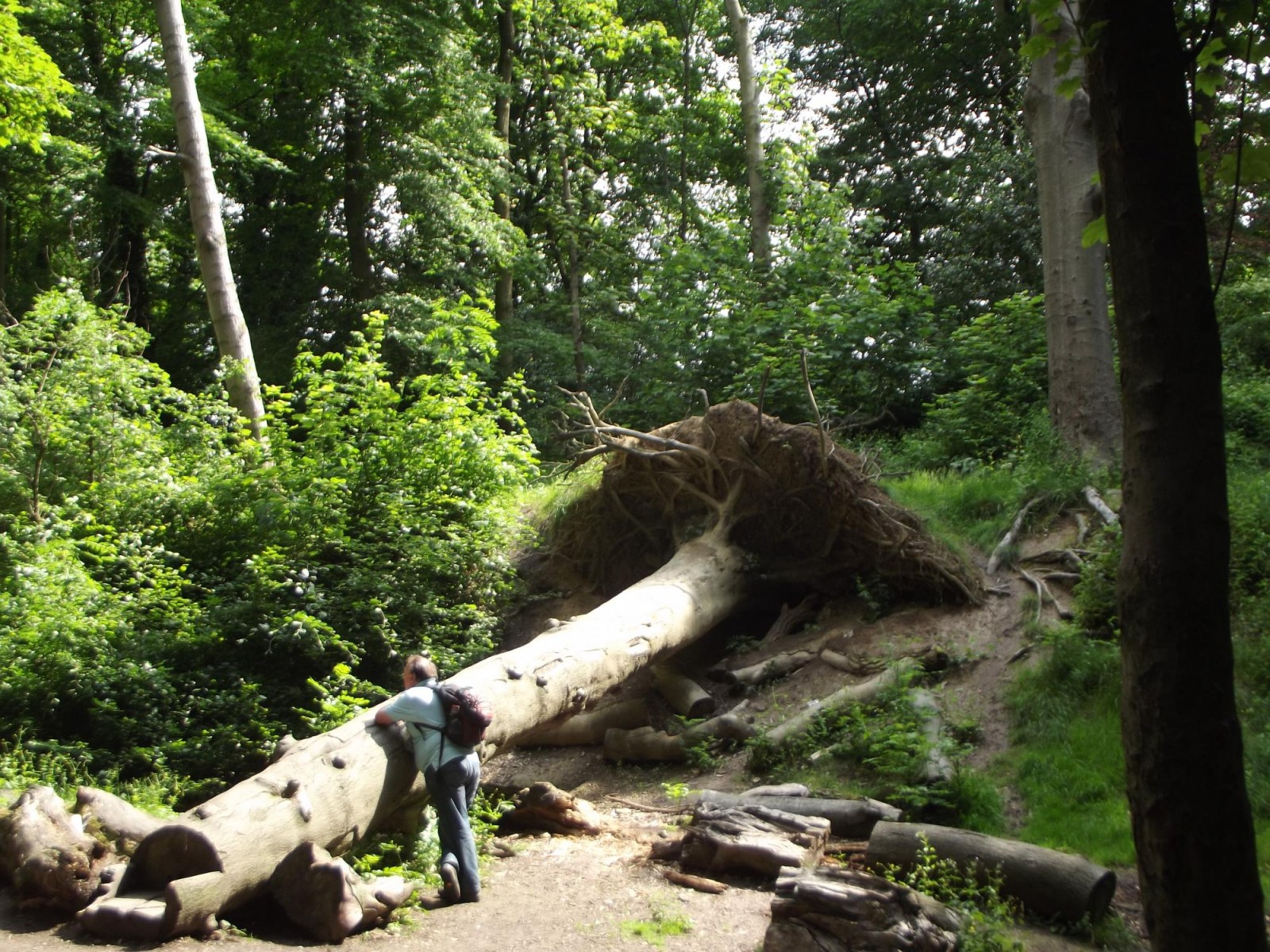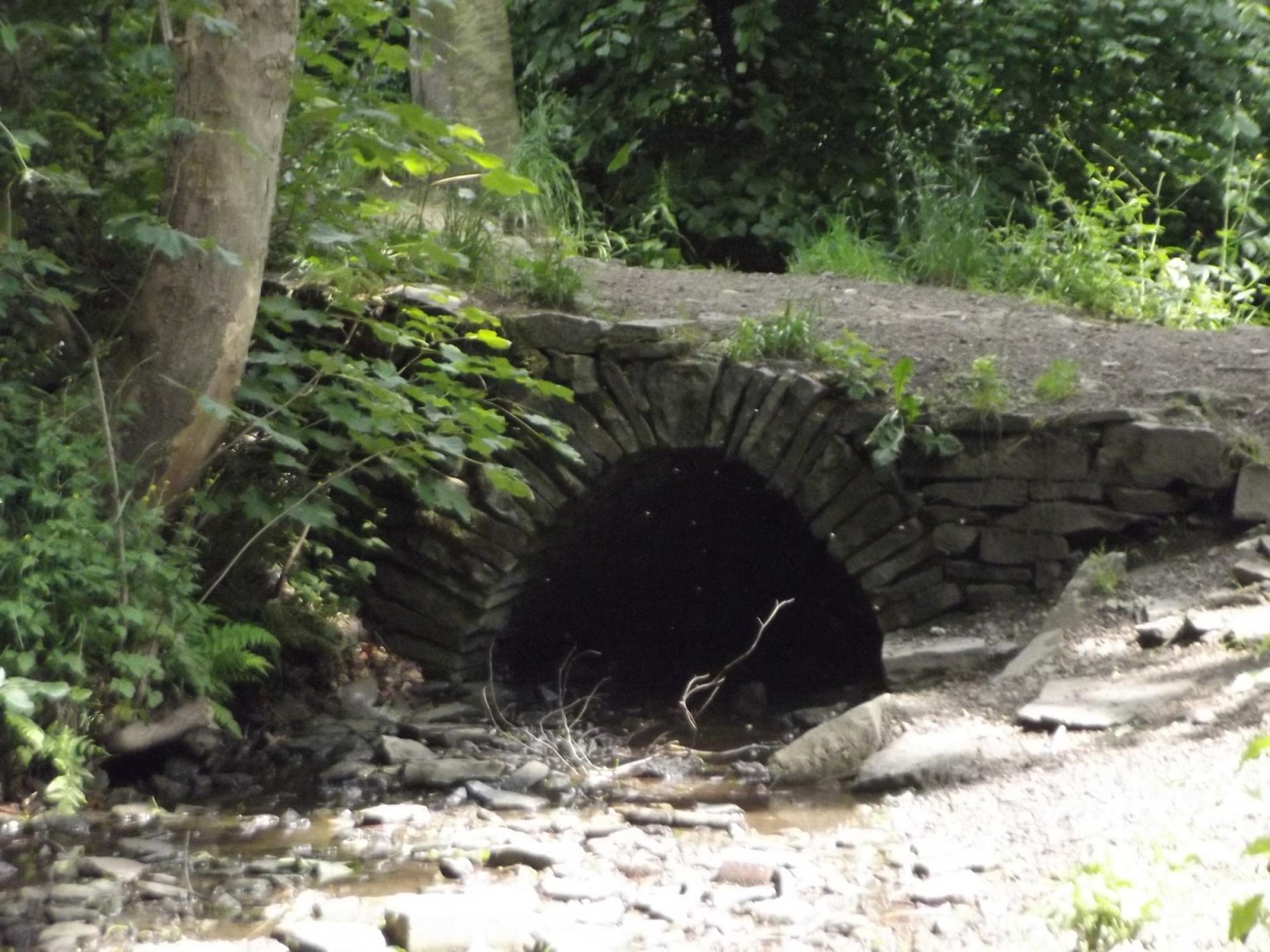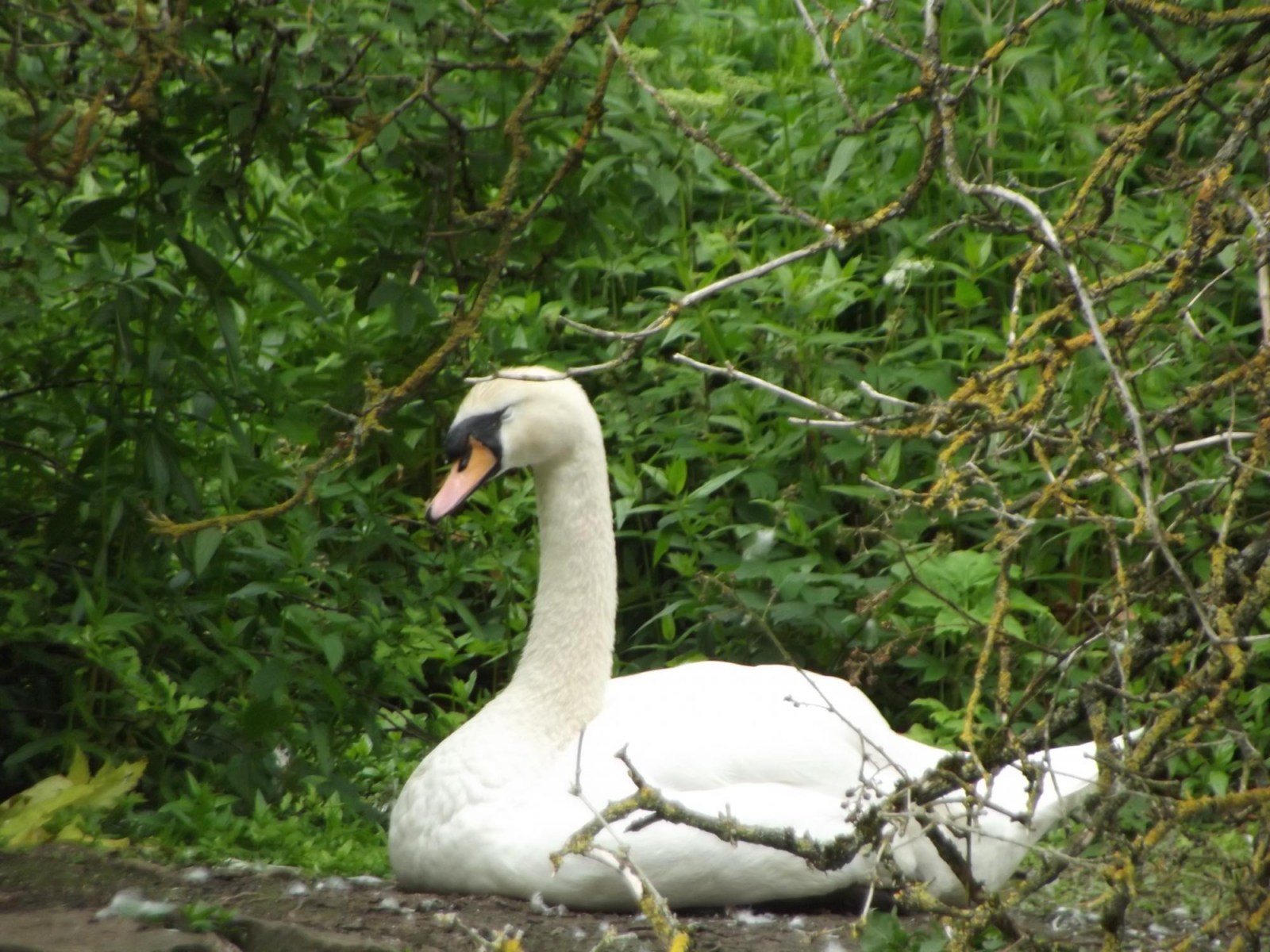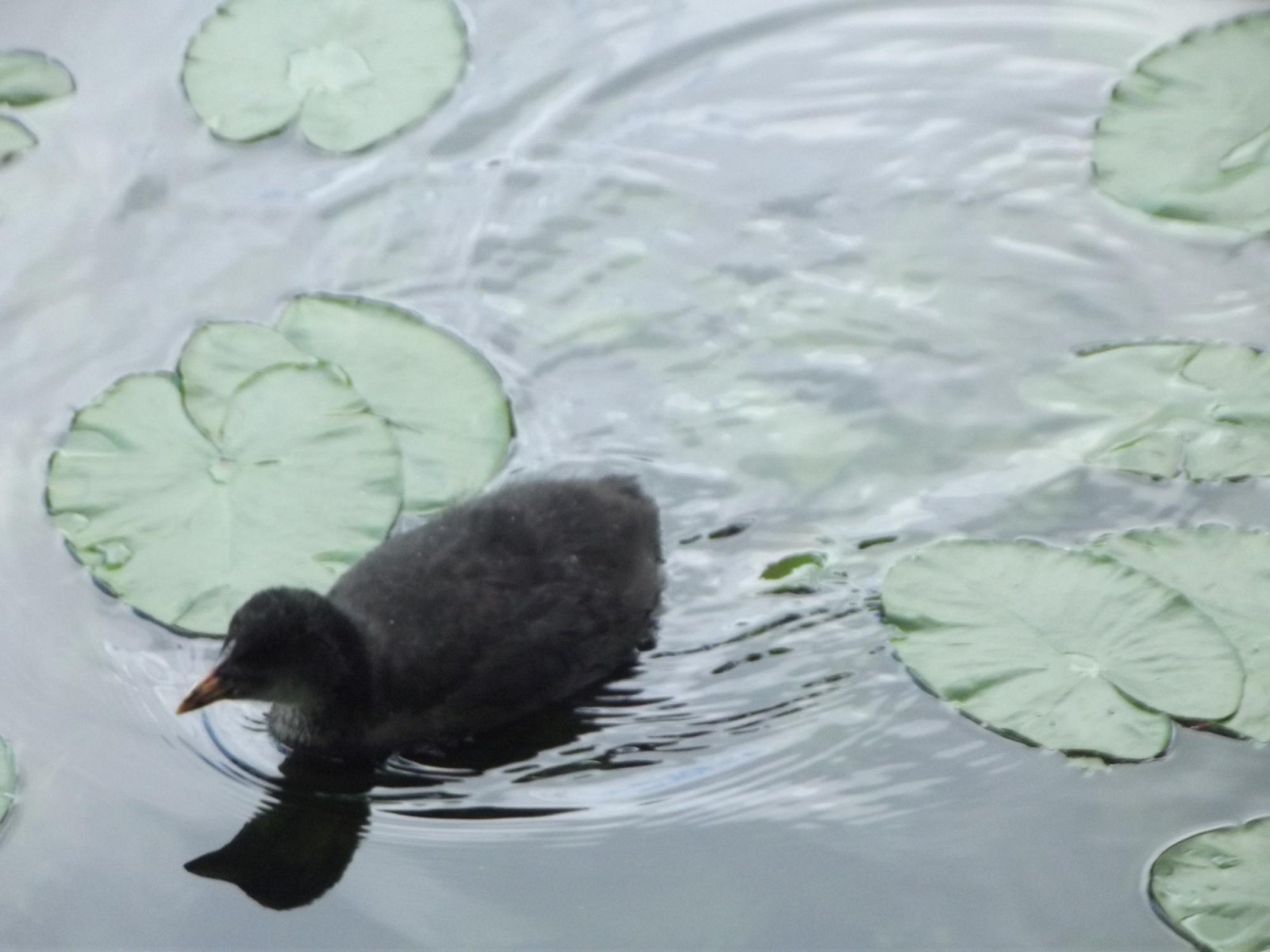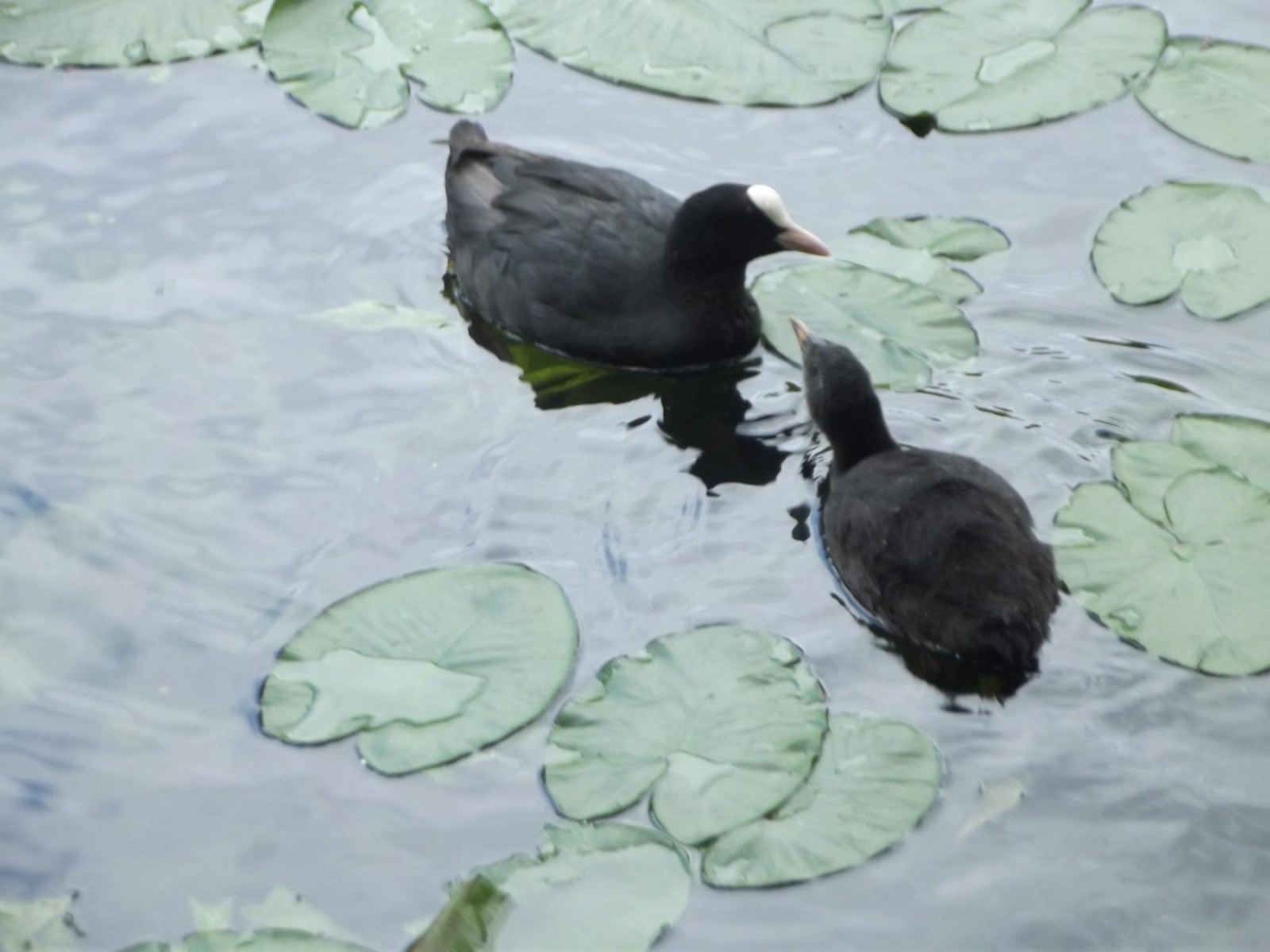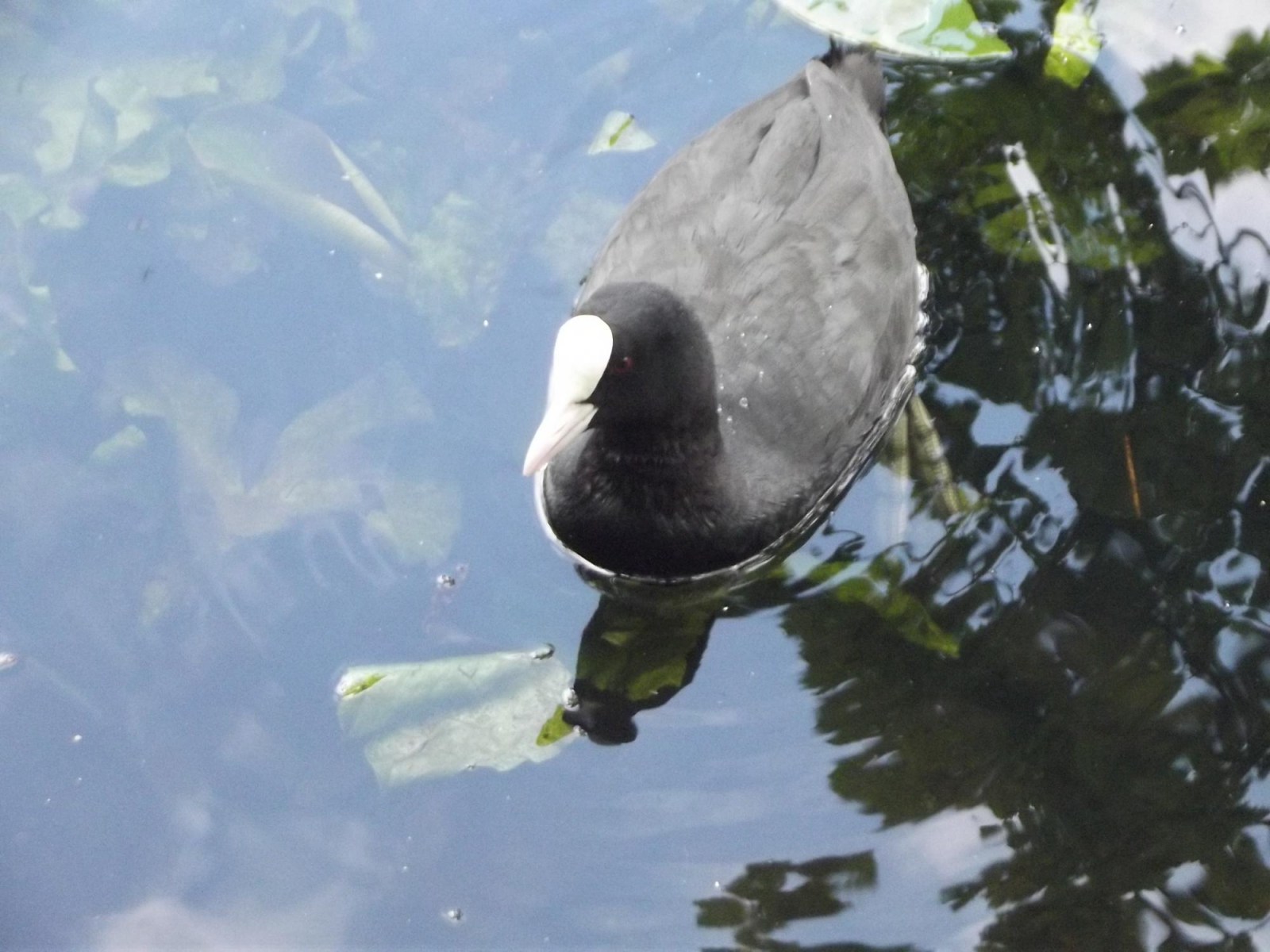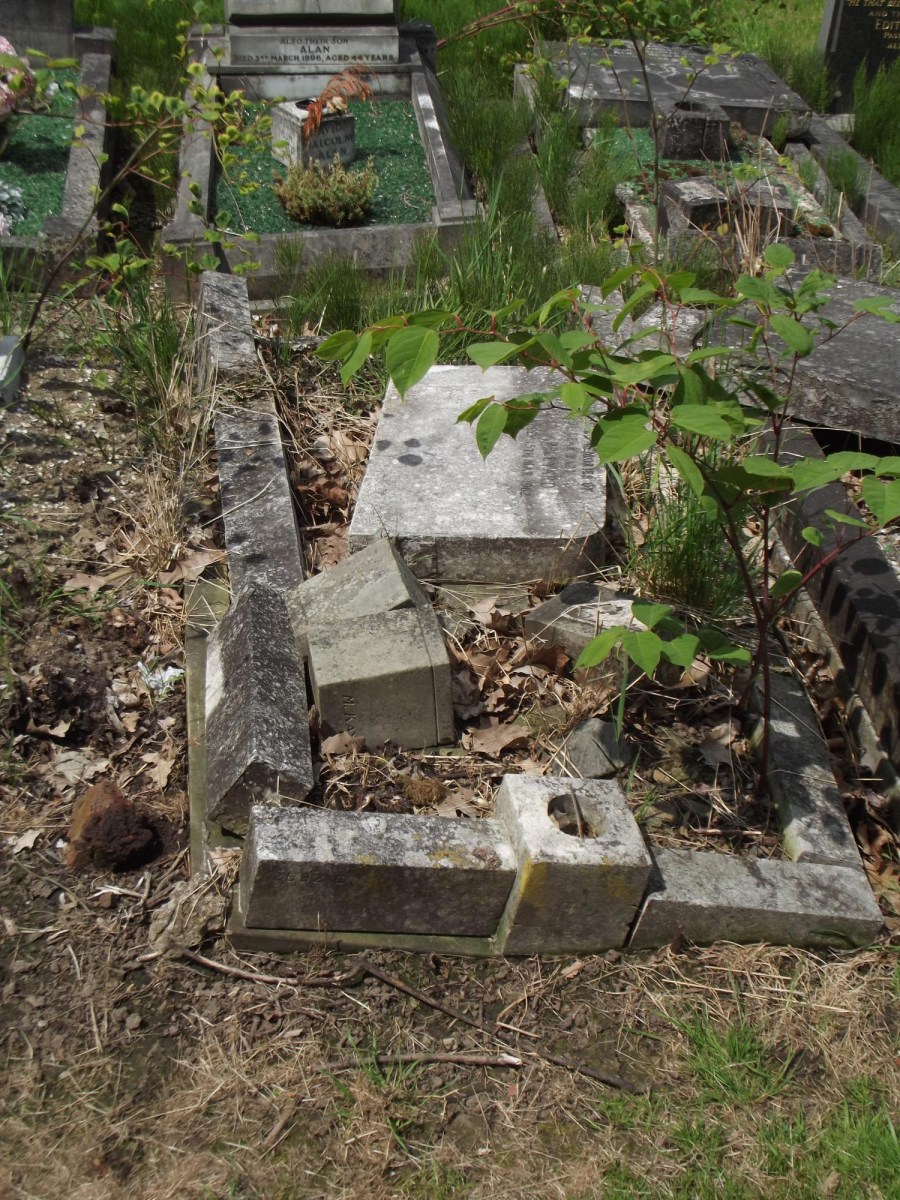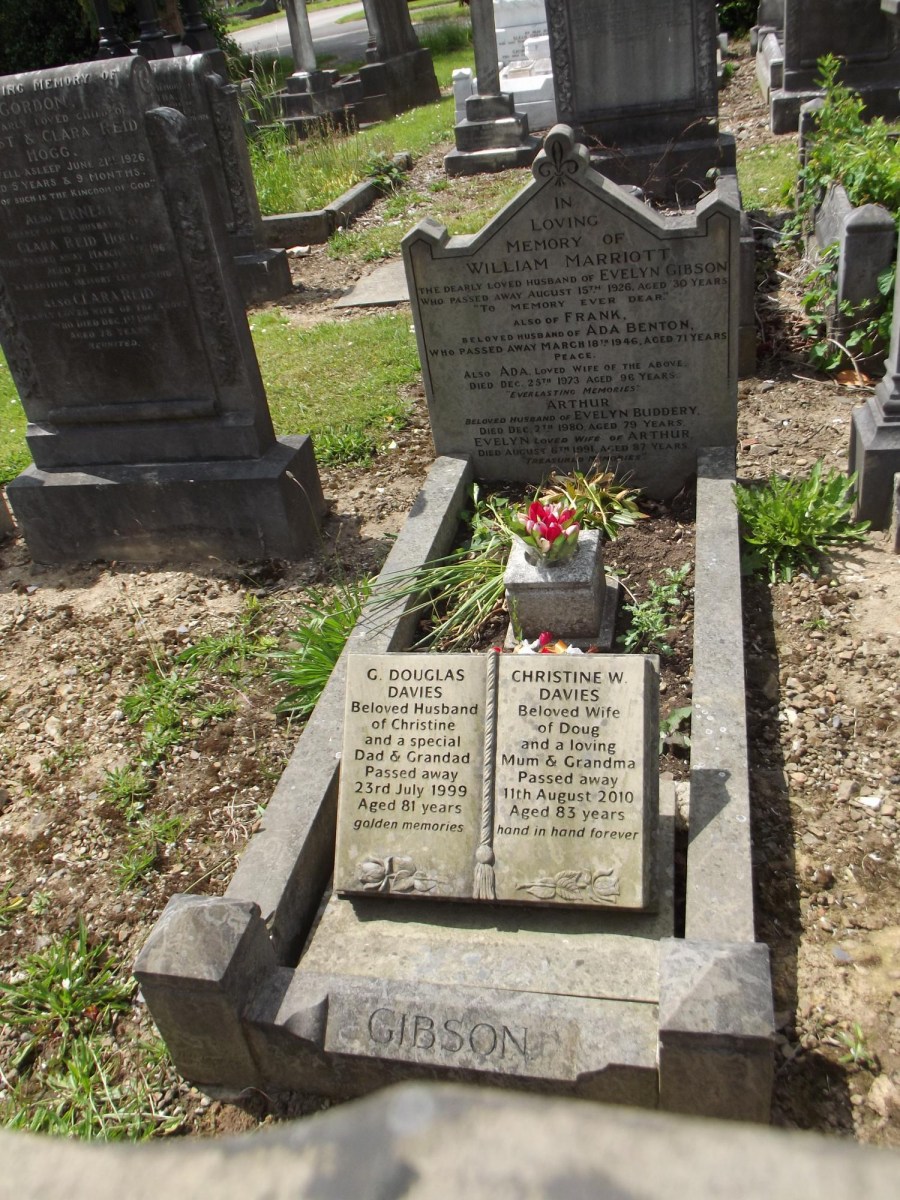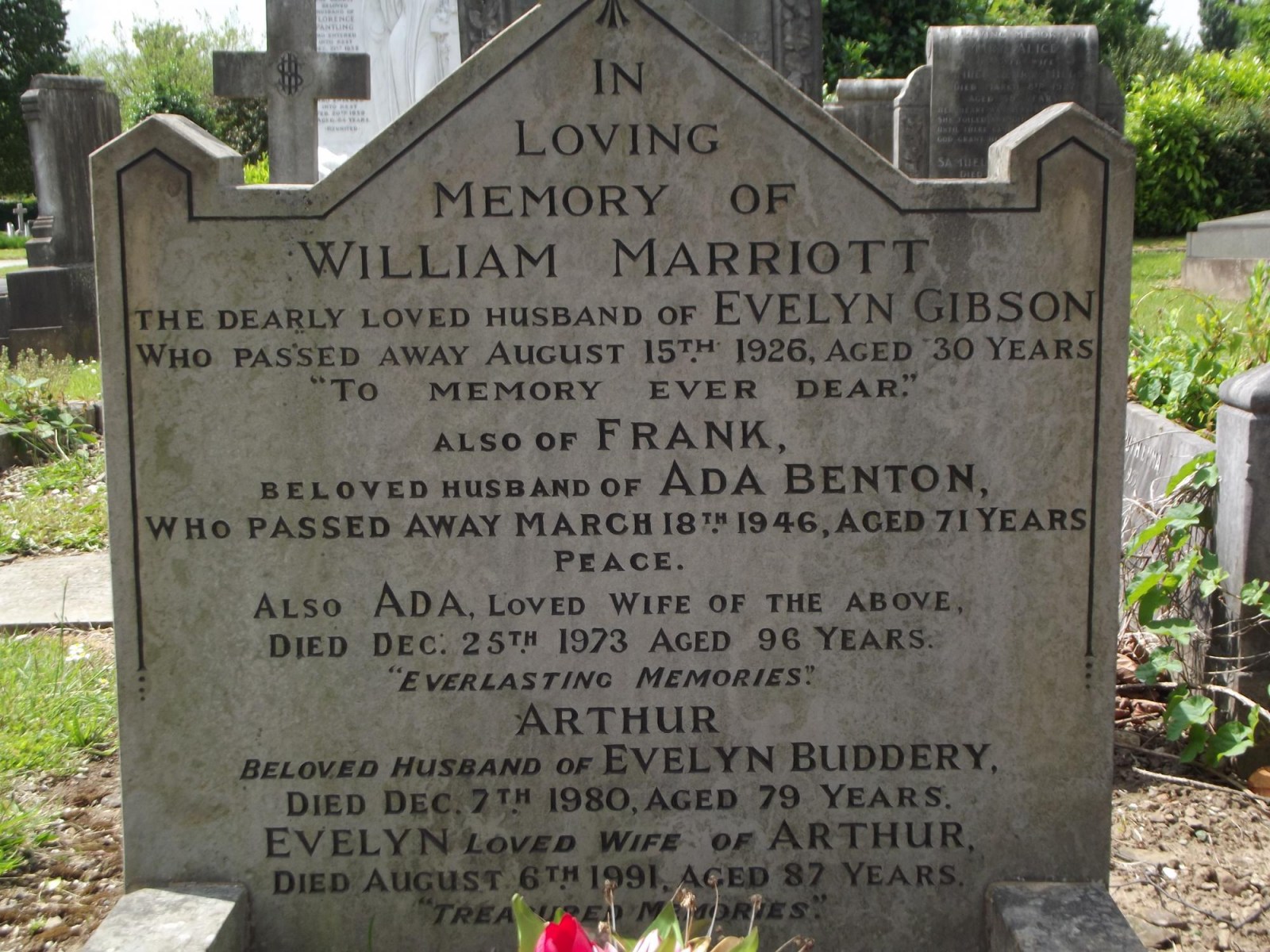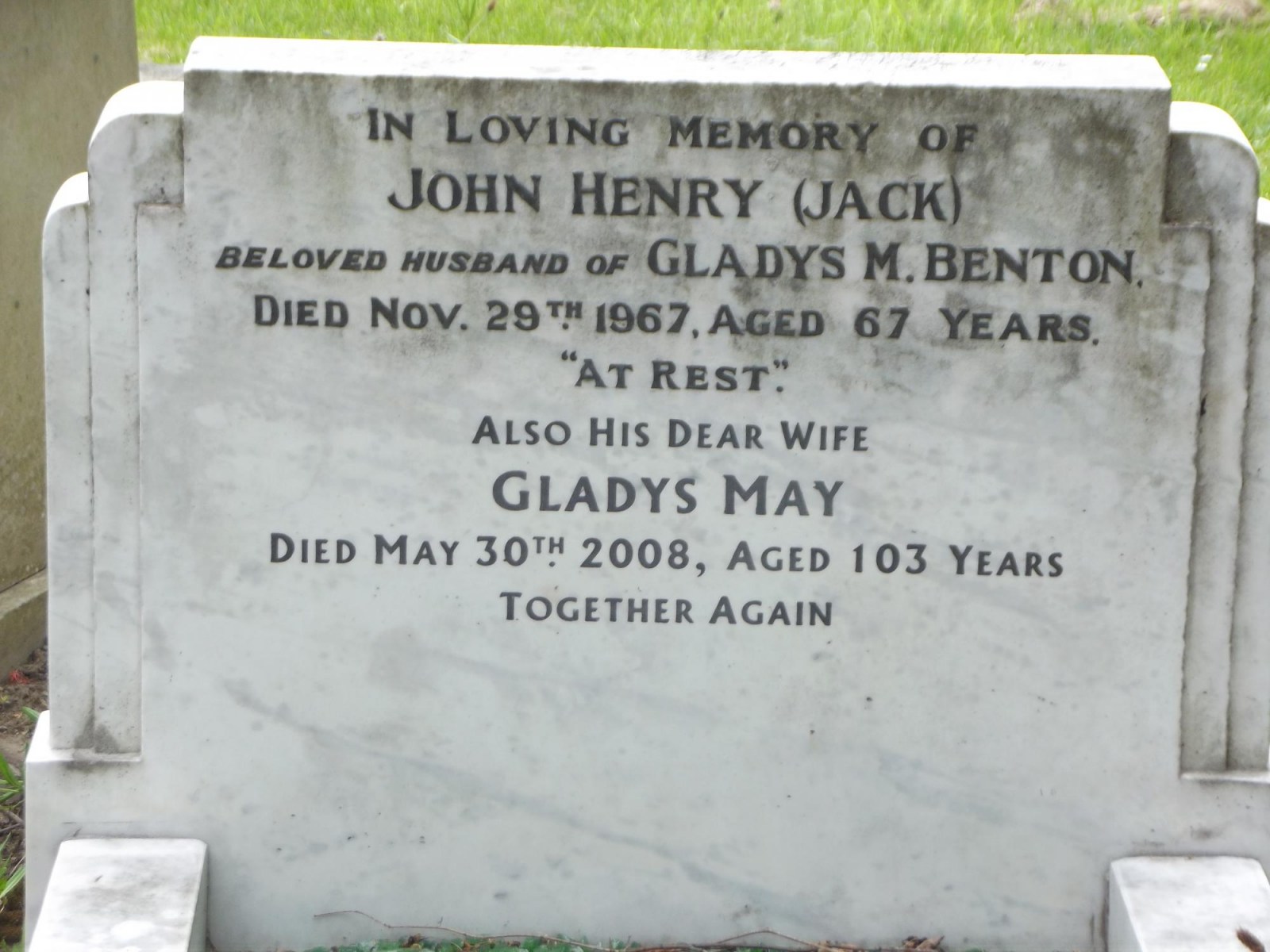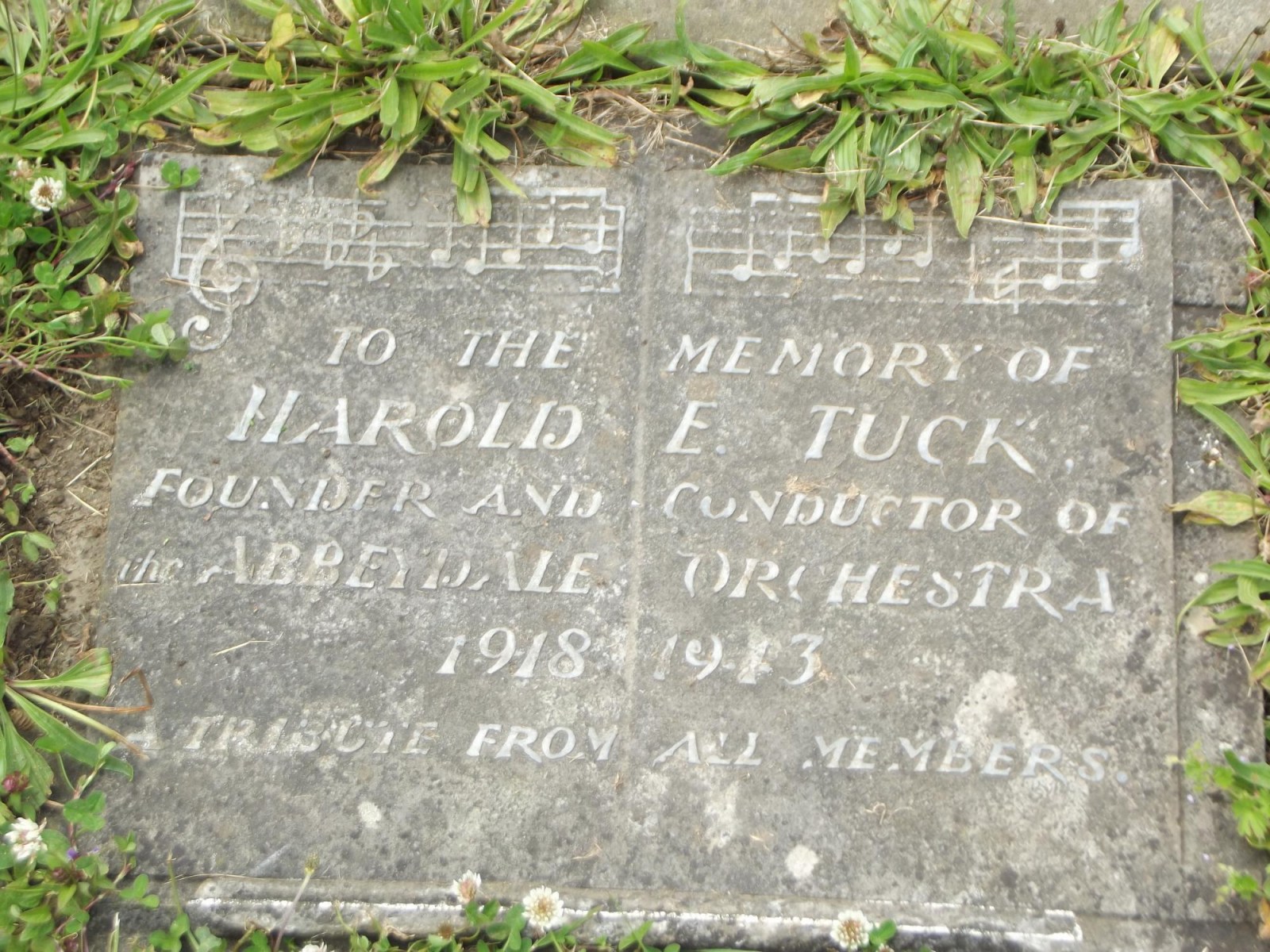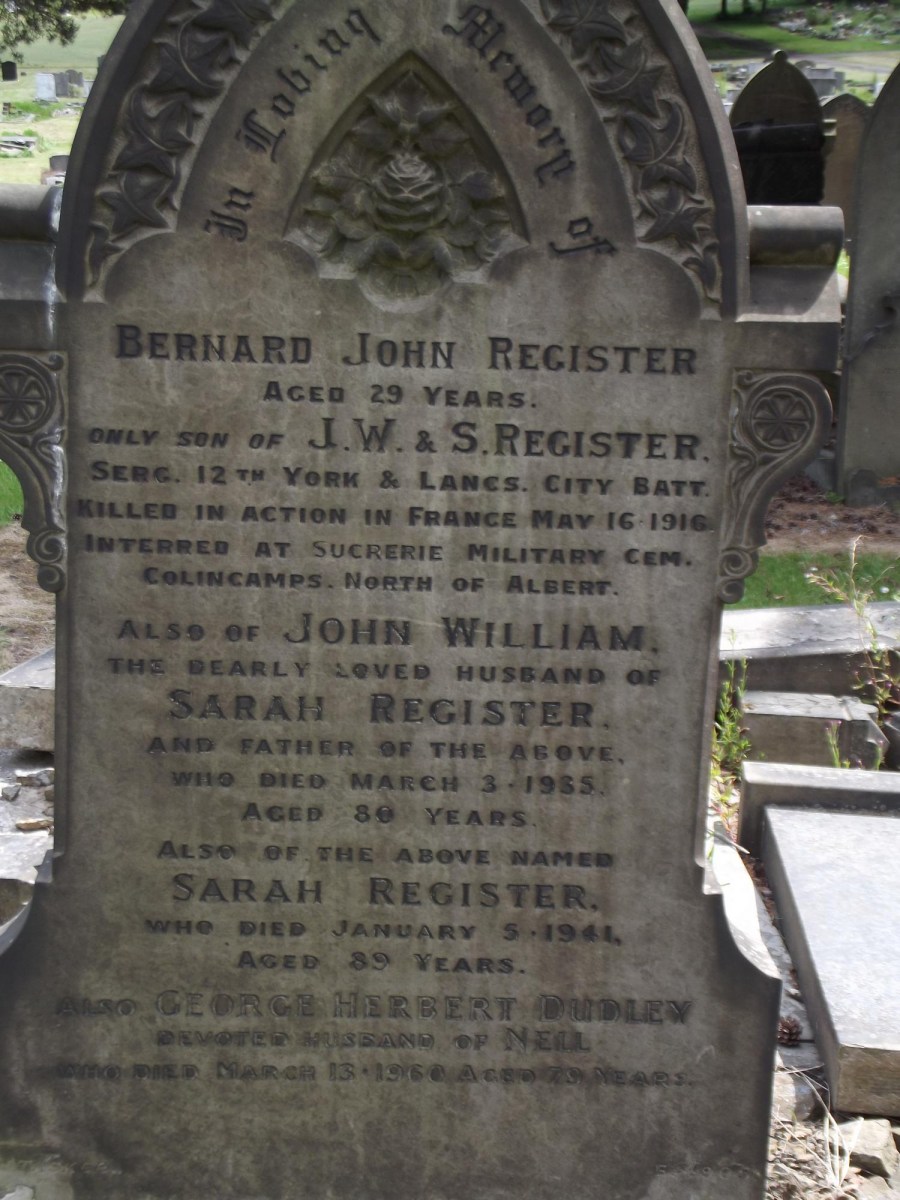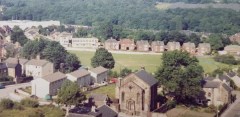Search the Community
Showing results for 'coal pit lane'.
Found 10,028 results
-
Lodge Moor Hospital was originally built in 1887, opening its 12 wooden wards on the 20th February 1888 as the Borough Smallpox Hospital. Demolition of Tuberculosis Huts, Crimicar Lane. 1955. s23386 s21093 View taken from an upstairs room of the main Crimicar Lane Isolation Hospital showing the WW2 concrete roofed air raid shelter. By June 1898 it was decided to add permanant stone buildings to comprise of accommodation for 146 patients. The administation block and isolation wards were occupied in 1901 and 6 wards each with 22 beds were completed by 1902. The Clock Tower and the Lodge at the main gates were completed in May 1903. For more information see: Lodge Moor Hospital 1887-1987, Lodge Moor Cenenary Brochure Ref: 362.11. See also The Hospital on the Moor, the spinal injuries unit Lodge Moor by Ella Goddard Ref: 362.197482. Clock Tower, Main Entrance, Lodge Moor Hospital. 30th October 1990. s23347 Administration Block, Lodge Moor Hospital. s23355 Infectious Diseases Wards (West Wards), Lodge Moor Hospitals23354 Respiratory Function Unit, Lodge Moor Hospital. s23353
-
Thought these images from Picture Sheffield may be of interest and jog a few memories. Mr. Hill features in some of the Staff photographs. Myers Grove Secondary School, Wood Lane, Stannington, 17th December 1964, later renamed Forge Valley Community School. https://www.picturesheffield.com/frontend.php?keywords=Ref_No_increment;EQUALS;s31116&pos=7&action=zoom&id=64165 18th February 1975. https://www.picturesheffield.com/frontend.php?keywords=Ref_No_increment;EQUALS;s31117&pos=8&action=zoom&id=64166 Was there a connection with Sheffield Rugby Union FC to Myers Grove School? This newspaper report from 1966 probably gives a clue as to why Rugby was so keenly followed. As was always the case in those days, depended on the PE teacher as to the sport preference https://www.picturesheffield.com/frontend.php?keywords=Ref_No_increment;EQUALS;s28748&pos=3&action=zoom&id=51627 Caption with the photograph, Sheffield Rugby Club's key to success, indoor training at Myers Grove Comprehensive School. wee pipe Pearson, (left) evades Clive Standring after taking a pass from Bob Wall as the backs swing into action. See Sheffield Morning Telegraph Friday 4th February 1966. Staff at Myers Grove Secondary School? Date possibly 1960/70'st08169 Left to right: Peter Jackson, Don Flockton, Doug Sawyer, Unknown, Unknown, Unknown, Doug Sanders, Unknown. These Staff photographs probably earlier than 1966 but were any still teaching at Myers Grove. t08170 Back Row: Unknown, ? Richards, Norman Southard, Don Flockton, John Milner, John Monkman, Cliff Priestley, Stuart Furniss and Cyril Russell Middle row: Philip Wardle (?), Peter Jackson, Dorothy Haydock, Janet Jeffrey, Chris Barnard, Joanne Jackson, Margaret Wright, Mrs. Hazlewood, Mel Jones, Joe Osgathorpe and Philip Wardle (?) Sitting: David Sanders, George Hunt, Mr. Hill, John Wray, Mike McGowan and Brain Sutcliffe. . t08171 Back row: Unknown, Howard Baxter, ? Richards, Unknown, Colin ? 2nd from back row: Philip Watson, Gordon Reece, Cyril Russell, Unknown, John Holyland, Doug Wardle, Bill Jamieson, Cliff Priestley, Peter Jackson, Stuart Furniss, Unknown, John Milner, Unknown. 3rd from back row: Chris Barnes, Unknown, Don Flockton, Mike Savage, John Monkman, Mary Russell, Mrs. Laundy, Erica Singleton, Dorothy Haydock, Jean Ward, Christine Baker, Margaret Wright, John Smith, Shirley Hedley Front row: Pat Robson, Doug Saw, Unknown, Brian Sutcliffe, George Hunt, John Wray, Mr. Hill, Molly Hattersley, Mike McGowan, David Sanders, Doug Emmett, Mel Jones, Janet Jeffrey. t08172 From back row: Peter Jackson, Unknown, Unknown, Unknown, Dave Marsh. 2nd row from back: Unknown, Norman Blaby, Unknown, Cliff Priestley, Dave Vincent, Unknown, John Smith, Unknown, Dave Crookes, Howard Baxter, Unknown, Unknown, Unknown, Unknown. 3rd row from back: Unknown, Unknown, Les Marshall, Stuart Furniss, Unknown, Unknown, Unknown, Doug Wardle, Barry Sampson, Philip Wharton, John Holyland. 4th row from back: Jim Ford, Eric Ward, Dilys Neat, Unknown, Unknown, Unknown, Unknown, Unknown, Carol Rutherford, Unknown, Unknown, Unknown, Mrs. Meakin, Unknown, Unknown. 5th row from back: Unknown, Ann Pilly, Daphne Green, Kath Bennett, Unknown, Helen Blaby, Mary Russell, Unknown, Dorothy Maddock, Sue ?, Josie Hutton, Unknown, Unknown, Chris Barnard, Mrs. Leaf. Front row; Doug Saw, Muriel Price, Unknown, Mel Jones, Doug Sanders, George Hunt, John Wray, Mr. Hill, Shirley Headley, Ken Mundon, Roy Yates, Brian Sutcliffe, Doug Emmett, Pat Robson, Tony Early. t08173 Back row: Joe Osgathorpe, Peter Jackson, John Monkman, Cyril Russell, Don Flockton, Mel Jones, Cliff Priestley, Unknown, Unknown. Middle row: Muriel Price (Secretary), Joanne Jackson, Pat Robson, Unknown, ? Richards, Unknown, Norman Southart, Philip Wharton, Carol Rotherforth, Janet Jeffrey, Margaret Wright, Chris Barnard. Front row: Mrs. Haywood/Hazlewood, Doug Wardle, David Sanders, John Wray, Mr. Hill, George Hunt, Dorothy Haydock, Stuart Furniss, Les Marshall.
-
Canal Cottages, Tinsley Park Road (demolished 1958) showing the Electricity Sub Station (right) and Sheffield and SYK Navigation from Broughton Lane Bridge. Photographs taken 8th May 1957 by Kodak Medical, Medical Officer of Health. Llewellyn Roberts. Properties demolished 1958. s24779 Mr. Vincent Lawrence Bryan with his children Stephen John; Kathleen and Pauline Mary in front of Nos. 7-12, Canal Cottages, Tinsley Park Road with the Sheffield and SYK Navigation right. s24778 The Bryan Family children who lived at No. 5 showing Nos. 6-1, Canal Cottages, Tinsley Park Road, looking towards Electric Sub Station and Chemical Works.t00515 Information from Stephen Bryan who can be seen, aged around 18 months, with his sister Kathleen aged about 4 years. Stephen loved to play with the brush in the puddle that frequently gathered in the yard. Mr. Vincent Lawrence Bryan in the doorway of No. 12 and Nos.11-7, Canal Cottages, looking towards Broughton Lane Bridge. t00514
-

What does "main" mean in a colliery name ?
Lysanderix replied to JS2021's topic in Sheffield History Chat
My finding of the Dore Colliery came about whilst I was researching the early days of the NCB….and Dore was listed in an official publication detailing all the coal mining companies, including those which were dormant. -

What does "main" mean in a colliery name ?
Ponytail replied to JS2021's topic in Sheffield History Chat
Rotherham Main Colliery. https://www.nmrs.org.uk/mines-map/coal-mining-in-the-british-isles/yorkshire-coalfield/sheffield/rotherhammain/ https://en.m.wikipedia.org/wiki/Rotherham_Main_Colliery Rotherham Main Colliery at Canklow. Dalton Main Colliery Ltd. https://en.m.wikipedia.org/wiki/Dalton_Main_Collieries_Ltd. Aldwarke Main Colliery https://en.m.wikipedia.org/wiki/Aldwarke_Main_Colliery Aldwarke Main Colliery Explosion 1875. https://www.nmrs.org.uk/mines-map/accidents-disasters/yorkshire/aldwarke-main-colliery-explosion-rotherham-1875/ Aldwarke Main Colliery Accident 1904. https://www.nmrs.org.uk/mines-map/accidents-disasters/yorkshire/aldwarke-main-colliery-accident-rotherham-1904/ -

What does "main" mean in a colliery name ?
Ponytail replied to JS2021's topic in Sheffield History Chat
Maltby Colliery, formed as Maltby Main Colliery Co. Ltd. 1907. https://www.nmrs.org.uk/mines-map/coal-mining-in-the-british-isles/yorkshire-coalfield/sheffield/maltby-colliery/ -
Can any one help me pinpoint the location of Deep Pit Colliery? (see image). On the Census taken in 1851 my Ancesters are living at Deep Pit Cottage . Regards Southside
-
Eyre Street, Lots of Thomas Fisher and Edwin Unwin, in George Curr’s land late Dr Frith's, [1827] https://www.picturesheffield.com/frontend.php?keywords=Ref_No_increment;EQUALS;arc04101&pos=5&action=zoom&id=103589 Shows Jessop Street, Jessop Lane, Eyre Street Earl Street and Eyre Lane. Owners / Tenants marked: Thomas Fisher, Edwin Unwin, William and John Alsop / Joseph Foote. According to the article in the Star, dated 19th January 2023. "John’s brother, George (1749-1826)" Is this "George" or another relative?
-
Charles Brown's ballooning career: Brown's first balloon was exhibited from 17th July 1824 in a specially constructed building in a yard in Carver street, lately occupied by Wm. Hodgson and Co. Admission was 2 shillings for Ladies and Gentlemen, a shilling for working people and 1s 6d for families of over four people, but by the 23rd July had reduced to 1 shilling for the gentry and 6d for workers. This balloon was 35 feet in diameter, formed from tapering pieces of silk, 33 inches wide, over sixty feet long and in alternating colours of crimson and white. The car was beautifully ornamented and lined with crimson silk with a festooned canopy. Brown's first ascent had been in Sadler's balloon at Derby (William Wyndham Sadler was killed in October 1824 when his balloon hit a Bolton chimney, and his head hit the brickwork). Brown's second aerial voyage was made on Tuesday 10th August 1824 from James Hibberson's garden in Sycamore street. This first ascent in his own balloon was planned to include Brown's brother, but the balloon would not support two passengers. The Sheffield Gas Company provided him with 10,500 cubic feet of gas. The intention was to charge spectators to defray his costs, but attendance was low, as Park Hill provided free viewing for the crowds. Brown had never piloted a balloon previously, but successfully ascended and was in the clouds within ten minutes. Brown initially had to throw out two of his three bags of ballast (8 pounds each) and he eventually reached an altitude of over a mile (2,166 yards). After going through a brief snow storm, he passed Tickhill, and shouted to the people below using his hailing trumpet, though they didn't hear. He began rapidly descending and wanting to retain his last bag of ballast, removed his boots to throw out, however the balloon recovered before this was needed. He continued as far as Mr Pearson's rye field at Axholme. Several gentlemen who had followed him from Tickhill assisted recovery of the balloon together with local 'peasants'. In Bawtry a chaise was arranged and the party arrived in Sheffield (at the Twelve O' Clock Public House) at quarter to two a.m. His third flight was from Barnsley, with his balloon now named "Herschell", and was planned for 2 p.m. on 6th September 1824 from a piece of ground next to the Gas Works. Tickets at the Gas House Gates were 2s 6d or for admission to Mr Horsfall's timber yard in May Day Green tickets were 1 shilling. Due to the weather, the ascent was postponed to the next day (Tuesday). On this voyage he attained 3,190 yards, landing 2 miles from Ferrybridge at Sir John Ramsey's Park. His fourth ascent was from Wakefield at their Musical Festival. Brown's next flight was on Wednesday 10th August 1825 from Wright & Haslehurst's new cricket ground at the Top of the Park, Sheffield. For this flight he gave the added attraction of a crimson and white parachute being released with an animal attached, though this didn't happen due to storms. After a wait for a thunderstorm to disperse, and difficulties filling the balloon, it struggled to reach 600 feet as it was wet and heavy, and pedestrians pursued the balloon through the streets of Sheffield. People on the roof of the music hall in Charles street could hear Brown calling for people to follow him and give assistance. At about 5 p.m. the balloon cleared the town centre at 3-400 feet and was headed towards Heeley, landing at Brincliffe Edge. Wednesday 31st August 1825 at Hull was his next outing. On May 26th 1826 Brown took off from Beverley, landing at Thorne, however the wind was so strong, and with no assistance on landing, he had to let the balloon go - he advertised a reward for its return. "Herschell" was found at Swithamly Hall near Leek, the seat of Trafford Trafford Esq. whose wife saw it suspended over trees as the grappling hook had snagged a wall - the wall collapsed and the balloon ascended but the hook caught on a very tall tree, and with the help of 30 men it was secured and returned by post-chaise to Brown in Sheffield. Browns next ascent, with an improved "Herschell" was on Whit Monday 4th June 1827 from the Hyde Park Cricket Ground again. When Brown arrived at 3p.m., he was upset that his assistants had allowed the balloon to be damaged by gusts of wind. The ascent was reluctantly abandoned, until 11th June. For this ascent Charles was accompanied by his brother Roger. The next ascent was on 30th August 1827, from the piece of ground behind the Balloon Tavern in Sycamore street. On 6th September 1827 he travelled 10 miles setting off from Pontefract. On 6th October 1827 the venue was Wood street, Wakefield, opposite the Woodman Inn. Unfortunately Charles Brown was ill, so his younger brother Roger was to pilot the balloon. After delays, the balloon took off at about 5p.m. and disappeared into the clouds. But suddenly it re-appeared, making a rapid and apparently uncontrolled descent. The frantic voice of the aeronaut could be heard, and the balloon appeared to have collapsed. Due to his inexperience, when the balloon was buffeted by violent winds in the upper reaches, Roger pulled the wrong rope which allowed most of the gas to escape via the safety valve. He landed two miles away near the village of Flanshaw, and thousands of spectators ran in that direction, finding him with a broken foot and a head injury. A gig was found to take him to a local surgeon, and he suffered no permanent ill-effects. The Browns seem to have had a break for a few years, but in July 1838 Charles announced plans to make two ascents in his new balloon, the "Great North Star", constructed solely by Brown, from the Botanical Gardens on Thursday 2nd and Monday 6th August 1838. The Thurday event was cancelled due to the weather, and no gas being available the following day. On the Monday, Brown was accompanied by Mr Spring of the Masbro' Brewery. The balloon almost hit the top of the lodge's stone gateway, avoided by Brown putting his hands on the stonework, and Spring throwing out ballast. They passed over Doncaster, landing near Wadworth, then were escorted with music, in a cart to Tickhill, thence to Sheffield. A further ascent from the Botanical Gardens was planned for Monday 13th August 1838, it being a Royal Holiday (Queen Adelaide's birthday). A crowd of about 10,000 assembled. However there was insufficient gas due to water in the pipes and the ascent was deferred til the next day. On the Tuesday there was still insufficient gas to be able to lift Brown, so at 7 p.m. to avoid the risk of violence by the crowd, the balloon was sent aloft unmanned. It landed almost undamaged at Hackenthorpe. On 24th August 1838, Brown and the balloon were at Newcastle-on-Tyne, and he had two companions in the car with him. On Tuesday 11th September 1838 Brown made his thirteenth ascent with the "Great North Star" at Glasgow. Being short of ballast due to lack of buoyancy of the gas, the balloon was whirled about, smashing a window and breaking a chimney. On 25th September 1838, a launch from the Park cricket ground was planned. At noon the balloon was filled with 50,000 cubic feet of gas at the Gas Works near Sheaf-bridge, and was able to carry three passengers over the retort house. However by 4p.m. despite the addition of locally generated hydrogen it was unable to lift a single man. Damage to the envelope allowing release of the gas was stated as the cause. On 5th October 1838 a private flight was made from the Gas Works yard. Brown's brother Roger and another gentleman were on board. The gas was unsatisfactory and the balloon came down near Clough House, where one passenger alighted and the balloon managed to get as far as the Chesterfield Road, 3 miles from town. On 9th October 1838 a flight from the Piece Hall at Halifax was planned but due to poor availability of gas it could not carry a pilot and was let loose unmanned, arriving at Barnsley slightly damaged. A flight of the "North Star" was planned for 7th September 1839 from Hyde Park Cricket Ground but postponed due to water in the gas. Crowds of lawless people had got over the walls and fraudulently claimed refunds, threatening violence when challenged. Their threats to tear the balloon to pieces was carried out and Brown lost considerable money. Brown announced that his new balloon "Britannia" would be launched from the lawn by the side of the bear pit in the Botanical Gardens on 19th September 1843 - his 41st trip. The rate of fill didn't allow a launch. The next launch was from the yard of G.O. Brown & Co near the New Gas Works, but low numbers paid admittance, most watching from the Hyde Park hill. However Brown did make it as far as Lincoln. After this he did little flying, but kept up an interest, and accompanied his son to Newhall Gardens, where the son Charles flew. In January 1856 Charles Brown was an expert witness in the County Court case of Gypson v. Turner. He knew both parties. The plaintiff was Richard Gypson, formerly of London but currently of Pyebank, Sheffield, who wanted to recover £20 8s 6d from Edwin Turner, a Wicker butcher, the balance of account for "instruction in the theoretical, experimental and practical science of aerostation". Gypson was an aeronaut of 25 years experience, and was engaged in 1854 for an ascent from Newhall Gardens. Turner was keen to accompany him, but the gas in use was of poor quality and would not support two people, so he was disappointed. However he was so keen to make an ascent, that he told Gypson he would even go to the expense of having a balloon of his own. Terms were agreed to build a balloon in Sheffield, together with a series of model balloons to assist instruction, and the following June Gypson came to Sheffield and stayed with Turner for seven weeks. During this time Turner cut off the gas pipe to his sitting room so that he could inflate balloons. Finally Gypson arranged a flight from Newhall for Turner, the balloon being filled at Saville street gas main, but Turner was so excited for his journey that he got into the car and was conveyed out of control towards Newhall. Due to the high wind the balloon hit a tree and a large hole was made, so the balloon fell - however Gypson's instruction paid off and Turner conducted himself safely. Still enthusiastic Turner and Gypson arranged to borrow the balloon of Mr Simpson, Cremorne Gardens, for two ascents. This balloon ascended to two and a quarter miles and landed near Worksop, but due to the crowds sustained some damage. As the second ascent from Barnsley had already been advertised, Gypson was instructed to repair the balloon which he did in Mr Shortridge's room at Barker Pool. Gypson travelled to Barnsley to make arrangements, but Turner, possibly frightened by his experiences, declined to make the Barnsley ascent. Gypson tried to obtain his charge of £5 from Turner without success, hence the court case. The newspaper account of the trial is quite entertaining and can be read here: Independent 26th January 1856 some further detail of mishaps here: Early flying accidents
-
Upper Forge (Forge Dam), Porter Brook at Ivy Cottage Lane, c. 1826 https://www.picturesheffield.com/frontend.php?keywords=Ref_No_increment;EQUALS;arc06218&pos=56&action=zoom&id=102553 Detail from Plan of the Whiteley Wood Works and other property belonging to Samuel Mitchell and Co., [1826] (arc03974). Plan of the Whiteley Wood Works and other property belonging to Samuel Mitchell and Co., [1826] https://www.picturesheffield.com/frontend.php?keywords=Ref_No_increment;EQUALS;arc03974&pos=55&action=zoom&id=102552 From left to right: Dam, Upper Forge, Old Dam, road from Brookhouse Green, wood, plantation, meadow, plantation, dam, Whiteley Wood works, forge, plantation, Bottoms Wood, The Heys, part of Dodge Field, part of Little Field, Woody, Croft, Holme Bank, dam, wheel, Porter Field, road to Sheffield and road to Nether Green. Key: In Upper Hallam - Forge Dam Banks and land adjoining, plantation, lower part of Dodge Field, Upper Holme Bank, Lower Holme Bank, road through Holme Bank, road along Porter field, Porter field, grinding wheel, dam goight banks, etc. In Ecclesall Bierlow - House Woody Bottom Lane and wood, plantation and goight, meadow, road along top of plantation, road through meadow, plantation and rad through, dams with the banks, Whiteley Wood Works Houses, Bottoms Wood, the Heys the part pasturable, road and remaining part, road from the Heys to Whitley Wood Chapel, plantation and chapel, part of Little Field, Woody Bank, Croft, road to the grinding wheel and Woody part adjoining the River. Whiteley Wood Works and Wire Mill Dam, Porter Brook, Whiteley Wood Road (formerly the works of Thomas Boulsover), c. 1826. https://www.picturesheffield.com/frontend.php?keywords=Ref_No_increment;EQUALS;arc06219&pos=57&action=zoom&id=102554 Detail from Plan of the Whiteley Wood Works and other property belonging to Samuel Mitchell and Co., [1826] (arc03974).
-
Arundel Street. Section. Levels taken for a common sewer from Porter Street to the River Porter near the White Lead Works, [1825] https://www.picturesheffield.com/frontend.php?keywords=Ref_No_increment;EQUALS;arc04027&pos=63&action=zoom&id=103213 Refers to Arundel Street, end of Duke Street, end of Earl Street, end of Eyre Lane, Porter Lane, and a culvert.
-
Land of John Watson and T. B. Holy, Arundel Street, [1830] https://www.picturesheffield.com/frontend.php?keywords=Ref_No_increment;EQUALS;arc04032&pos=67&action=zoom&id=103277 Shows Bye Goight, River Porter, land sold by James Fernley to Ellin and Ingall; Pearson and Griffith; Josh. Houldsworth; Houldsworth Lane; and Thomas Booker. Lands of T. Holy on the south side of Sheffield, showing land schemed for gardens and roads, c. 1804 and 1818 https://www.picturesheffield.com/frontend.php?keywords=Ref_No_increment;EQUALS;arc04030&pos=65&action=zoom&id=103260 Shows Arundel Street, Furnival Street, Eyre Street, Charles Street, Browne Street [Brown Street], [Arundel Lane]. Refers to Daniel Darwent, Benjamin Hadfield, Robert Hide, Benjamin Raworth [Rayworth], Joseph Skinner, Thomas Potter, David Davey, Thomas Smith, Henry Froggatt, Joseph Cantrill, Josh. Skinner, William Butcher, William Morley, Firth and Co., Charles Hutchinson, Robert Colyer, Josh. Clarke, James Linley, Jonathan Helliwell, Robert Hide, Peter Frith, and William Colwell.
-
A map of the Dams, Goights and other Works belonging to the Pond Forge Co. together with some other intermediate properties. 1820. https://www.picturesheffield.com/frontend.php?keywords=Ref_No_increment;EQUALS;arc04213&pos=73&action=zoom&id=105197 Boardman's Bridge, wear [weir], Porter Brook, goight, River Sheaf, Upper Dam, Sheaf Lane, bridge, Upper Forge Wheel, dam, Upper Forge, Sheaf Mill, steam engine, Lower Forge, grinding wheel, arched goight, tail goight, Shude Hill, Hospital Bridge, Hospitals, Sheaf Bridge, Castle Orchards Wear [weir], River Dun [River Don], Pond Street, Forge Lane, Pond Well Hill. Late Joseph Ward, John Hounsfield, Josiah Blackwell, late Abraham Wright, S. Woodcock and Sons, Joseph Blackburn, Thomas Mearbeck and Co., S. Rawson and Co. [?Thomas Rawson and Co], Joseph Shimmeld, John Vickers, Sheffield Gas Light Co., S. and S. Darwin, Sarah Beeley, Widow Beardsall, John Hale, Widow Badger, and J. B. Ward.
-
Hello, a while ago, late 2020 in fact, I saw some interesting dessert spoons. They had been fabricated in what I thought was pewter but with a steel wire running down through the centre of the spoon stems to give the increased rigidity that would allow the spoons to remain serviceable over time. They were made by the not totally unknown "Thomas Yates" of Birmingham concern. A bit later I saw an image of a damaged spoon of the same style but probably made by a Sheffield concern. The damaged spoon seemingly was made by Philip Ashberry & Sons and here is an image with better preserved examples of the "steel wire" spoons. We have, already on the Forum, a few passing references to Philip Ashberry & Sons at 21 Bowling Green St, Sheffield including the firm being taken over around 1935 but with the "Ashberry" trademark still being used by the new company. Silversmiths Retail Ashberry Philip & Sons 19 & 21 Bowling green street Electro Platers & Gilders Ashberry Philip & Sons 19 21 Bowling Green Street Britannia Metal Manufacturers Ashberry Philip & Sons 19 21 Bowling Green Street "Ashberry's"were a very productive and long lasting Sheffield family concern so here is some added information. None of our references touch on manufacturing of pewter products but here’s a quick note about the metal alloy "pewter". Pewter has been "made" and used for thousands of years and in its oldest form it was a mix of about 70-90% tin and up to 30% lead and possibly contaminated with small amounts of other metals. This high lead "black pewter" is perhaps what we British think of it being used for jugs and tankards for drinking beer in olden days. At the beginning of the industrial age, getting rid of the lead, and changing the "mix" with about 92% tin, 6–7% antimony, and 1–2% copper and sometimes with bismuth a much more versatile and useful alloy was produced. This original 92/6/2 mix was called “Vickers White Metal” after its Sheffield developer “John (James) Vickers” and has come to known as “Britannia Metal”. It was an excellent metal for electroplating on and the resulting product was known as “Britannia Plate”. Philip Ashberry did not start his business at "Bowling Green Street". Apparently the start was not far away at "Copper Street". Shown below, from the Sheffield Indexers are 4 early entries. Ashberry, Philip (, spoon maker). Address: 15 Copper Street, in 1833. Recorded in: Whites History & Directory of Sheffield . Ashberry, Philip (, spoon mfr.). Address: Copper Street, in 1837. Recorded in: Whites Directory of Sheffield & Rotherham . Ashberry, Philip (~, Spoon Manufacturer). Address: 21 Bowling Green Street, in 1841. Recorded in: Henry & Thos. Rodgers Sheff & Roth Directory . Ashberry, Philip (, spoon maker). Address: 21 Bowling~green Street, Sheffield in 1846. Recorded in: Slaters Directory, Sheffield. There are slightly expanded descriptions of Philip Ashberry's concern in subsequent entries, though they probably still made spoons. Ashberry, Philip (, Britannia Metal Manufacturer(s)). Address: Bowling-green Street, Sheffield in 1846. Recorded in: Slaters Directory, Sheffield. Ashberry, Philip (, Manufacturer of spoons and Britannia metal goods and dealer in ingot and ro). Address: Bowling Green Street (Metal Works & Rolling Mill); h. Prospect House, Crook, in 1852 (home address) Recorded in: White's Gazetteer & General Directory of Sheffield Ashberry, Philip (Qualifying property, Warehouse and shops). Address: 21 Bowling Green Street, St Philips in 1855. Recorded in: Sheffield Burgess Rolls. In 1856, the business was restyled as "Philip Ashberry & Son" (with John A. Ashberry as partner). It became "Philip Ashberry & Sons" in 1865 with the addition of George W. Ashberry and Philip H. Ashberry but that partnership was dissolved in 1871 when John Arthur Ashberry established his own fairly short lived firm. Philip Ashberry (the founder) continued in the business until 1878 (died 1881) when other family members carried the business forward. They became "Ltd" in 1899 trading as shown below. Ashberry, Philip & Sons Limited (, manufacturers of silver, electro-plated, nickel silver & britannia goods, metal merchants, rollers & manufacturers of silver & plated fruit & dessert knives, dram flasks & electro-platers & gilders & c). Address: 21 Bowling Green Street, in 1905. Recorded in: Whites Directory Sheffield and Rotherham. Here are some Sheffield Indexers references for the "Sons" Ashberry, G. W. (~, Britania Metal Ware Manufacturer). Address: ~ Roebuck Road. Recorded in: Whites Sheffield & District Directory - 1871. Ashberry, George Willis (, director Philip & Sons Limited). Address: h. 112 Westbourne Road Recorded in: Whites Directory of Sheffield & Rotherham - 1911. Ashberry, Philip Henry (, managing director Philip & Sons Lim). Address: h. Goldthorpe, 358 Mushroom Lane Recorded in: Whites Directory Sheffield and Rotherham. - 1905 Additionally for 1871 there is an entry for “Ashberry, Jno. A.” Could this be “John Arthur Ashberry” working in the Family business or in his own newly formed concern? There is a reference that the John Arthur Ashberry concern was at Love Street Ashberry, Jno. A. (~, Plated Ware Manfr., Laithfield House). Address: ~ Fitzwalter Road Recorded in: Whites Sheffield & District Directory Here follow some images of "Philip Ashberry & Sons" marks, some with the Sheffield notation. The first image shows a likely early mark, with only the "Philip Ashberry” name and a later “PA&S” mark for "Philip Ashberry & Sons". Also, there is EPBM for ElectroPlated Britannia Metal. Now a wonderful spirit kettle that has made its way to the USA The "Britannia " mark image may not or may not indicate the kettle is made in Britannia Metal. We know from the earlier reference that Ashberrys were Britannia Metal manufacturers. They were based at the "Britannia Metal Works" and their trademark was ‘BRITANNIA’ (picture and words). They did have an additional pictorial mark of a clawed arm brandishing a spear. To me the spear looks like a flagstaff with a pennant flag on. Here now are some actual “Ashberry” pewter marks. The top mark looks like it has the “VR” for Queen Victoria on. The "Ashberry pewter" mark was on a plannished teapot. These “Royal Cypher” type of marks can be found on measuring vessels to officially confirm the delivered content of that vessel. This particular Royal Cypher mark does not look exactly correct for that and the mark is on a spoon. I wondered if it was suggesting a “Royal Warrant” from Queen Victoria? But suggesting only because the first gothic letter looks like a gothic “U” and not a “V” to me I am equally perplexed about this mark on a 5 inch (12.5 cms) spoon shown here. This is also marked with a Royal Cypher above the “Ashberry Patent” lettering. Is the crown with gothic style possible “G” and “R” for King George? George IV died in 1830 and would make this spoon and mark the oldest Ashberry item I have an image of. It looks too old to be a George V, 20th century spoon. Confusion is often the case with styled lettering. Do please help me out with my confusion. And just as I was finishing my research I saw this spoon and mark with “Ashberry's" on and "Best Meatal For Use" whichever metal that could be? Kalfred Hawley's name on a knife blade web site has more detailed information on the family history of the Ashberry concern.
-

Philip Ashberry, Pewter and Britannia Plate
Ponytail replied to Kalfred's topic in Made In Sheffield
Architects Drawing by T. H. Jenkinson, 4 East Parade for P. Ashberry and Sons Ltd., manufacturer of spoons and Britannia metal goods, etc, Bowling Green Street. 1870's Site Plan. Marked: Cottage houses intended to be taken down for further extensions; All the W.C. soil pipes will be carried up above roof full size; The Lavatories will empty on open grates; The drains under cellar floors will be jointed with, tar rope and cement and bedded in cement concrete. https://www.picturesheffield.com/frontend.php?keywords=Ref_No_increment;EQUALS;arc07340&pos=17&action=zoom&id=106480 Marked: Bowling Green Street, Ebenezer Square / South Parade, Russell Street, Green Lane, edge of Ebenezer Wesleyan Chapel. Elevation next Bowling Green Street. https://www.picturesheffield.com/frontend.php?keywords=Ref_No_increment;EQUALS;arc07343&pos=21&action=zoom&id=106484 Marked: signatures: William Smith; (Charles Black, crossed through); Stainforth & Lee; George Thickitt; Samuel Stevenson; James Puttrell; William Holden (probably the tradesmen who worked on the site) Elevations. https://www.picturesheffield.com/frontend.php?keywords=Ref_No_increment;EQUALS;arc07342&pos=19&action=zoom&id=106482 Marked signatures: J. S. Hawthorn;, William Smith. (probably the tradesmen who worked on the site) Floor plans, 1870s, by Firth Brothers and Jenkinson, Architects, 4 East Parade, Sheffield. Marked: Basement Plan;Third Floor Plan; Roof Plan; Ground Plan; Rolling Mill; Staircase; Stamp Room; First Floor Plan; Buffing Shop; Staircase; Spinning Shop; Making Up Shop; Second Floor Plan; Buffing; Landing; Top Making Up Shop https://www.picturesheffield.com/frontend.php?keywords=Ref_No_increment;EQUALS;arc07341&pos=18&action=zoom&id=106481 Marked signatures: J. S. Hawthorn;, William Smith. (probably the tradesmen who worked on the site) Second Chamber Floor Plan, 1874. Marked: House Garret, Pattern Room, Teapot Rubbing Room, and Spoon Rubbing Room; Closet. https://www.picturesheffield.com/frontend.php?keywords=Ref_No_increment;EQUALS;arc07347&pos=24&action=zoom&id=106487 Also marked: signatures: William Smith; (Charles Black, crossed through); Stainforth & Lee; George Thickitt; Samuel Stevenson; James Puttrell; William Holden (probably the tradesmen who worked on the site) Roof Plan, 1870s Marked: Skylight; Ventilator, Flagstaff; Cistern Chamber; Fall Pipe. https://www.picturesheffield.com/frontend.php?keywords=Ref_No_increment;EQUALS;arc07344&pos=22&action=zoom&id=106485 Also marked: signatures: William Smith; (Charles Black, crossed through); Stainforth & Lee; George Thickitt; Samuel Stevenson; James Puttrell; William Holden (probably the tradesmen who worked on the site) Section on line A-B. 1874 https://www.picturesheffield.com/frontend.php?keywords=Ref_No_increment;EQUALS;arc07345&pos=20&action=zoom&id=106483 Section on line C-D, 1874. https://www.picturesheffield.com/frontend.php?keywords=Ref_No_increment;EQUALS;arc07346&pos=23&action=zoom&id=106486 -

Old Sheffield tram routes - bit of confusion !
Lemmy117 replied to Roger Stevenson's topic in Sheffield History Chat
As above, there was a plan to have a route over Psalter Lane, in fact a junction was installed at the Ecclesall Road for a few years. There were also electricity feeder cables for the tramway that didn't necessarily follow the actual route, this could be one forming part of a link between Ecclesall Road and Nether Edge. -

Old Sheffield tram routes - bit of confusion !
Viners replied to Roger Stevenson's topic in Sheffield History Chat
Just had a look at some of the old route maps and posts on the subject and saw mentions of routes being changed and extended. There's a reference to there once being an 'Ecclesall terminus' and the route being extended 'to Millhouses Lane'. Perhaps the answer is the trams did go that way at one time but they re-routed it as the network was extended? If the maps tend to show the final layout of the system, it might not show how it changed over time? https://www.mediastorehouse.co.uk/sheffield-city-archives/maps-plans/sheffield-corporation-tramways-parks-14050142.html -
Finally I have a few minutes to report on the latest Sharrow Lane School Reunion held on Wednesday 26th June. Altogether 29 former pupils and Sharrow residents turned up, the youngest aged 71 and the eldest, I think, 85. We had a terrific two hour session of exchanging memories and revelling in the atmosphere of the old Junior School Hall. With their permission, here is a list of those present: (The ladies consented to using their maiden names) Valerie Shaw; Christine France; Brian Milner; Tony Ford; Denis Anson; Mick Glossop; Jack wade; Alan Barnett; Tony Faulds MBE; Dave Holmes; Dave Storf; Ian Brelsford; Malcolm Gladwin; Ralph Holmes; Frank Turner; keith Spooner; John Beatson; Tony Hardwick; Roger Walker; John Smith; Phil Smith; Roger Stevenson; Graham Whitham; Darrell Whitham; Pauline Mackreal; Diane Goodwin; Ronald Hibbert and myself, David France. It was soon agreed that there should be another reunion later this year and so it has been decided there will be a special Christmas Lunch event at 1pm on Wednesday 27th November 2019 but places MUST be pre-booked through me. A price for the lunch will be published nearer the date. Watch this space! The photographs here show what a cordial and relaxed event it was. Book your space for November now by sending me a personal message.
-
SHEFFIELD TRAMS Sheffield Tramway was an extensive tramway network serving the city of Sheffield and its suburbs. The first tramway line, which was horse-drawn, started in 1873 with the opening of a line between Lady's Bridge and Attercliffe. This line was subsequently extended to Brightside and Tinsley. Routes were built to Heeley, where a tram depot was built, Nether Edge and Hillsborough. In 1899, the first electric tram ran between Nether Edge and Tinsley. By 1902 all the routes were electrified. By 1910, the Sheffield Tramway network covered 39 miles, in 1951 the network was extended to 48 miles. The last trams ran between Leopold Street and Beauchief on 8 October 1960—three Sheffield trams were subsequently preserved at the National Tramway Museum in Crich. History The horse tram era The Sheffield horse tramway was created under the Tramways Act 1870, with powers granted in July 1872. The first routes, to Attercliffe and Carbrook, Brightside, Heeley, Nether Edge and Owlerton opened between 1873 and 1877. Under the legislation at that time, local authorities were precluded from operating tramways but were empowered to construct them and lease the lines to an individual operating company. Tracks were constructed by contractors and leased to the Sheffield Tramways Company who operated the services. Prior to the inauguration of the horse trams, horse buses had provided a limited public service but road surfaces were at that time of poor quality and their carrying capacity were small. The new horse trams gave smoother rides, traveling on steel rails and were an improvement over previous alternatives. The fares were too high for the average worker so the horse trams saw little patronage, services began later than when workers began their day so were of little use to most. Running costs were high as the operator had to keep a large number of horses and could not offer low fares. It was common practice to paint tramcars in different colours according to the route operated. This allowed both illiterate and the educated, literally, to identify a tram. The electric tram era The Sheffield Corporation (Sheffield City Council) took over the tramway system in July 1896. The Corporation's goal was to expand and mechanise the system. Almost immediately a committee was formed to inspect other tramway systems to look at the improved systems of traction. Upon their return the committee recommended the adoption of electrical propulsion using the overhead current collection system. The national grid was not as developed as it is now and so the Corporation set out to provide the required current. The Corporation were to become their local domestic and industrial electricity supplier were the additional load would be sold. A power station was built for the Sheffield Corporation Tramways on Kelham Island by the river Don between Mowbray Street and Alma Street. Feeder cables stretched from there to the extremeties of the system, covering over forty miles of route. Network The Sheffield Tramway Company's original horse drawn tram network was 9½ miles long and radiated from the city centre to Tinsley, Brightside, Hillsborough, Nether Edge and Heeley. A few years after the Sheffield Corporation took over, horse tramways were gradually and completely replaced firstly by single deck electric tramcars then by double decker tramcars. It extended routes to Beauchief and Woodseats in 1927 and to Darnall and Intake in 1928. Adjacent lines were converted into circular route by sleep track connecting links. The line along Abbey Lane, linking Beauchief to Woodseats was one of them and its entirety was built on reserved track. The last extensions were opened in 1934 and extended the network to Lane Top, via Firth Park.Three small sections, Fulwood Road, Nether Edge and Petre St were closed between 1925 and 1936. In 1952, the Corporation closed 2 sections (inc. the Abbey Lane line), followed by the rest of the network between 1954 and 1960. Tram depots Over the years eight depots were built throughout the city to service a fleet of about 400 trams. Tinsley tram depot Tinsley tram depot (53°24′28″N, 1°24′45″W) was built in 1874 and was the first depot built in Sheffield for the "Sheffield Tramways Company". It was originally built for horse trams but was converted for electric trams in 1898–1899 after which it was capable of accommodating 95 tram cars. Following the abandonment of the tramway system in 1960, the Tinsley depot was sold and was subsequently used as a warehouse. Much of the original 1874 building still exists and the entire depot is listed as a historically significant building. The Sheffield Bus Museum Trust has used part of the depot as a museum since May 1987. Heeley tram depot Heeley tram depot (53°21′31.5″N, 1°28′28″W) was the depot for horse trams only, the line to it was never electrified. The depot was built by the Sheffield Tramways company in 1878. When the tram system was abandoned in 1960, the depot was sold and subsequently used as a car repair shop until 2005. The building has been sold and flats will be built incorporating the structure, as it is a listed building Nether Edge depot A small tram shed was built at the Nether Edge terminus (53°21′35″N, 1°29′18″W), which opened in 1899. The Nether Edge line as well as two other small sections was abandoned due to the narrowness of the streets the tram travelled on. This caused problems and was unsuitable for efficient service. The Sheffield Corporation concluded that trams were better for city service. Queens Road works The Queens Road works (53°22′8″N, 1°27′52″W) opened in 1905. Many of the trams used on the Sheffield tramway were built at Queens Road. The building survived for many years following abandonment, but was demolished in the 1990s. Shoreham Street depot Construction of the Shoreham Street depot (53°22′36″N, 1°27′54″W) started in about 1910 on the site of an 18th century leadmill. Following the abandonment of the tramway the depot was used as a bus garage for many years until it finally closed in the 1990s. Much of the building has since been demolished and redeveloped as student flats, although those parts that surround the entrance at the junction of Shoreham Street and Leadmill Road are still standing and in good condition. Crookes tram depot The Crookes depot, which was located on Pickmere Road (53°23′1″N, 1°30′25″W), was started in 1914, but not completed until 1919. It closed on 5 May 1957 and has since been demolished. Tenter Street depot The Tenter Street depot (53°23′2″N, 1°28′21″W) opened in 1928 and was the last tram depot to remain in operational use. As well as the tram depot there was a bus garage on the upper level that was accessed from Hawley Street. Holme Lane depot (Hillsborough) The depot at Holme Lane (53°24′7″N, 1°30′12″W) closed on 23 April 1954. The facade of the building still stands, although the rest of the building has been demolished and a medical centre built in its place. Rolling stock Unlike other tram companies, whose trams were often rebuilt and made to last thirty to forty years, Sheffield Corporation adopted a praiseworthy policy of replacement by new vehicles after a twenty-five year life. The corporation never really stopped acquiring new rolling stock and by 1940, only eleven of its 444 trams were older than twenty-six years, more than half of them were less than ten. In its history, Sheffield Corporation operated 884 tramcars. Its last livery was the blue and cream livery, which is still worn on the preserved trams at Crich and Beamish. The 'Preston' cars The United Electric Car Company of Preston built 15 double deck balcony cars for Sheffield Corporation Tramways in 1907. Initially numbered 258–272 they had wooden seats for 59 passengers, and were mounted on a 4-wheel Peckham P22 truck with two Metrovick 102DR 60 hp motors operated by BTH B510 controllers. The braking systems comprised of a handbrake acting on all wheels, an electric brake for emergency use and a hand-wheel operated track brake. Between December 1924 and July 1927 they were rebuilt with a totally-enclosed upper deck. The 'Rocker Panel' cars Following the production of a prototype at the Sheffield Corporation Tramways Queens Road works in 1917, between 1919 and 1927 Brush at Loughborough built 100 of these cars, another 50 at were built at Cravens in Darnall. The 'Standard' cars The prototype Standard Car (numbered 1) was built by Cravens at Darnall, and entered service in 1927. Subsequently about 150 more were built at the Queens Road works and 25 were built by W.E. Hill & Sons in South Shields. From 1936–1939 the Queens Road works built redesigned Standard Cars, which were known as the 'Domed-roof' Class and had improved lighting and seats The 'Roberts' cars The prototype for this series (number 501) was built at the Queens Road works in August 1946. WIth comfortable upholstered seating for 62 passengers it was the last car to be built at the works From 1950–1952 35 more of these double deck trams, numbered 502–536 were constructed by Charles Roberts & Co. of Wakefield (now Bombardier Eurorail). They were carried on a 4-wheel Maley and Taunton hornless type 588 truck with rubber and leaf spring suspension. The cars were powered by two Metrovick 101 DR3 65 hp motors. Air brakes were fitted, acting on all wheels, and electric braking was available for emergency use. Car 536, which entered service on 11 April 1952, was the last tram to be constructed for the Sheffield tramway. Representing the ultimate development of the traditional British 4-wheel tramcar, the class worked for only 10 years, as Sheffield tramway was closed in 1960. On 8 October of that year, car 513, a member of the class ran specially decorated in the final procession; so too did sister tram 510, now preserved by the National Tramway Museum at Crich. The National Tramway Museum, Crich The National Tramway Museum at Crich in Derbyshire holds eight former Sheffield trams. Sheffield Corporation Tramways car number 15 is a horse tram dating from 1874; it was the first tram to be used at the museum in 1963. Car number 74 is another Victorian Sheffield tram that was sold to the Gateshead tramway and ran until 1951. Although only its lower deck survived, in use as a garden shed, it has now been restored to original condition by the museum. The museum also has Standard car number 189, a Domed-roof car (number 264), and a Roberts car (number 510). In addition there are two works cars from the Sheffield fleet and an early single-deck Sheffield tram that is not in working condition. Remnants There are few remnants of the, once extensive, tramway. The tram sheds at Tinsley and Heeley survive, as do parts of those at Holme Lane and Shoreham Street. In many places the tram tracks were not removed, the road was resurfaced over the tracks, and the tracks still survive (albeit covered). An example of tracks covered in this way was uncovered and made a feature of The Moor pedestrian precinct. Around the City there are about ten or so of the "overhead" poles still standing(2006), such as the matching pair in Firth Park, where you can also see a small section of track in the middle of the traffic island. Poles also survive at Manor Top, Woodseats and Abbeydale Road. In places where the trams ran on a reserved track, such as on Abbeydale Road South and Abbey Lane at Beauchief, the reservation has been converted into a dual carriage-way. This article is licensed under the GNU Free Documentation License and sources material from http://en.wikipedia.org/wiki/Sheffield_Tramway LINKS Wikipedia's Excellent Article On Sheffield Tramways - http://en.wikipedia.org/wiki/Sheffield_Tramway Sheffield In The Age Of The Trams Book - Click Here To Buy The Book Sheffield Trams Link - http://www.cyberpictures.net/sheffield/s1.htm More Sheffield Trams Pictures - http://www.railfaneurope.net/pix/gb/trams/...ffield/pix.html
-
Plan of proposed extension of Eyre Street to Porter Street and also the proposed widening of Porter Bridge. 1845. https://www.picturesheffield.com/frontend.php?keywords=Ref_No_increment;EQUALS;arc06810&pos=76&action=zoom&id=106241 Also shown are Brammall Lane [Bramall Lane], Hereford Street, Sylvester Street, Cumberland Street, and the Porter Brook.
-
Bennett Wheel. A plan of the Cutler's Wheel House on Little Sheffield Moor held of the Earl of Surrey by James Bennett. 1784. https://www.picturesheffield.com/frontend.php?keywords=Ref_No_increment;EQUALS;arc03503&pos=82&action=zoom&id=91098 Bennett's Wheel and Dam, the watering place and all the courses of the River Porter shown; some measurements. Watering Place. (Ellin Street, St Mary's Road). Weighing machine house and some ground adjoining Bennet’s Dam belonging to George Bennet, [1807] https://www.picturesheffield.com/frontend.php?keywords=Ref_No_increment;EQUALS;arc03640&pos=33&action=zoom&id=99191 Bennett's Wheel and the land adjoining as divided into lots for sale, The Moor, [1819] https://www.picturesheffield.com/frontend.php?keywords=Ref_No_increment;EQUALS;arc04155&pos=70&action=zoom&id=104118 The plan includes a building scheme over the part of the dam adjoining South Street, but it was not proceeded with. Shows South Street, Hereford Street and Porter Lane. Also, [River Porter] and Bennett's Wheel. Bennett's Wheel and premises adjoining agreed to be sold to Thomas Ellin. 1831. https://www.picturesheffield.com/frontend.php?keywords=Ref_No_increment;EQUALS;arc04156&pos=71&action=zoom&id=104119 Marked: South Street, Hereford Street, Porter Street, Sylvester Street, bridge, River porter, wear [weir], goight, tail goight, Bennets [Bennett's ] Wheel, dam, Back Lane, bye wash, and garden. Tenants / owners: Samuel Newbould, John Watsen [Watson], Peter Jerrison, and late George Hodgson. Note: the Field Book has Sylvester Wheel, but this is palpably an error.
-
Tuesday I went searching for relatives graves at Abbey Lane Cemetery. I went via Graves Park. The first thing I noticed was a lot of dead trees in the park. Also there were workmen in the woods felling a lot of them as well as taking a lot branches off, back to the trunk. Now if this is to do with the spate of tree killing bugs that are around I don't know. Or it could be to do with general woodland maintenance, creating more light etc for new trees to grow, or a combination of the two! The first image however shows I think wind action, with some afterwards pruning. The chap isn't a woodman, but he does add scale to the picture. Not far away from this fallen tree is the Pack Horse Bridge. Meanwhile the water fowl on the ponds are enjoying the warm weather! The first picture shows a Swan on the island in the lake. While I was taking the Swan a whole bunch of them came up close. so I could get these shots including the youngsters! Ok now to Abbey Lane... As the Sheffield Indexers have the location records for the graves. I marked the ones that I was interested on a map. In section G were 3 Benton's and 1 Appleyard (my Great-Grandfather). And just my luck not one could be found! The reason is that those left have suffered damage and the vast majority in that section are suffered the worse than any other part of the cemetery. C section next to it is better in comparison, but the one Appleyard grave located in is typical of those in G section. The photo below is a good example, it is a distant cousin, of mine, the death of a young child called Sally. As the grave dates to only 1962 I was surprised at the state of it. Clearly too painful an event for my other relatives to keep visiting the grave and correct the damage. So if you have a relative in G section if the grave has survived you will be very lucky! It seems that most of the Appleyard graves (in Sheffield) of my family have been destroyed by either the Council or the elements I was a bit lucky with some of my Benton relations. Clearly the edition of more recent burials has help preserve the grave. And adds some new relations to my tree I did not know about And another grave in fantastic condition and at 103 perhaps one of the oldest people to be buried there Now to some stones that I found interesting, which I know Sheffield History Members will add lots of facts too. Sadly I spent around two hours searching G section that I didn't have time to have a full look around for more! The first came up whilst searching another section for ancestors. Some of the stones are laid flat in the grass, clearing one away I found this little musical gem! Lastly another a family grave recording the loss of a son killed in the First World War. Of course the body is still over there! It's remarkable how these older stones last much better than more recent memorials.
-
Penistone Road from the junction with Barrack Lane (wall of Old Sheffield Barracks not Hillsborough Barracks) looking towards the Pigeon Lofts. s26386 Date: 06/10/1987. Penistone Road looking towards Balaclava Road and Barrack Lane (after the service station). 12th June 1967 The Old Barracks Infirmary (later used as flats) which stood at the junction with Penistone Road and Barrack Lane had at this time been demolished. Due to copyright restrictions only the thumbnail is available to view on Picture Sheffield website. https://www.picturesheffield.com/frontend.php?keywords=Ref_No_increment;EQUALS;s18659&pos=65&action=zoom&id=21320 Copyright. H. Ainscough.
-
Greenhead Lane in foreground and Lound Side in background.jpg
kidneystone posted a gallery image in Sheffield History Photos
From the album: Chapeltown
-
The original workhouse was situated in West Bar and was opened in 1733, hence Workhouse Lane, a remnant of which was still there in my memory. Basically right about where the roundabout is. Number 11 on the Gosling map. The Cotton Mill buildings (hence Cotton Street, Cotton Mill Row, and Cotton Mill Walk) were used as the Sheffield Union Workhouse from 1829 until 1881 (Fir Vale Workhouse opened). 18th June 1829 : The paupers having been removed from old workhouse to the new one, formerly the cotton mill, they were treated to 280lb of beef and 320lb of pudding; 317 paupers sat down. (Presumably the 600 pounds weight of food was meant for the lot of 'em, not each ) -------------------------- One for the people visiting The Fat Cat ... "map evidence suggests that the row of buildings backing onto Alma Street to the left of the current entrance to the Richardsons site (former Globe Steel Works) were not only part of the Workhouse, but also date back to the first cotton mill in 1805" Globe_Works.doc

